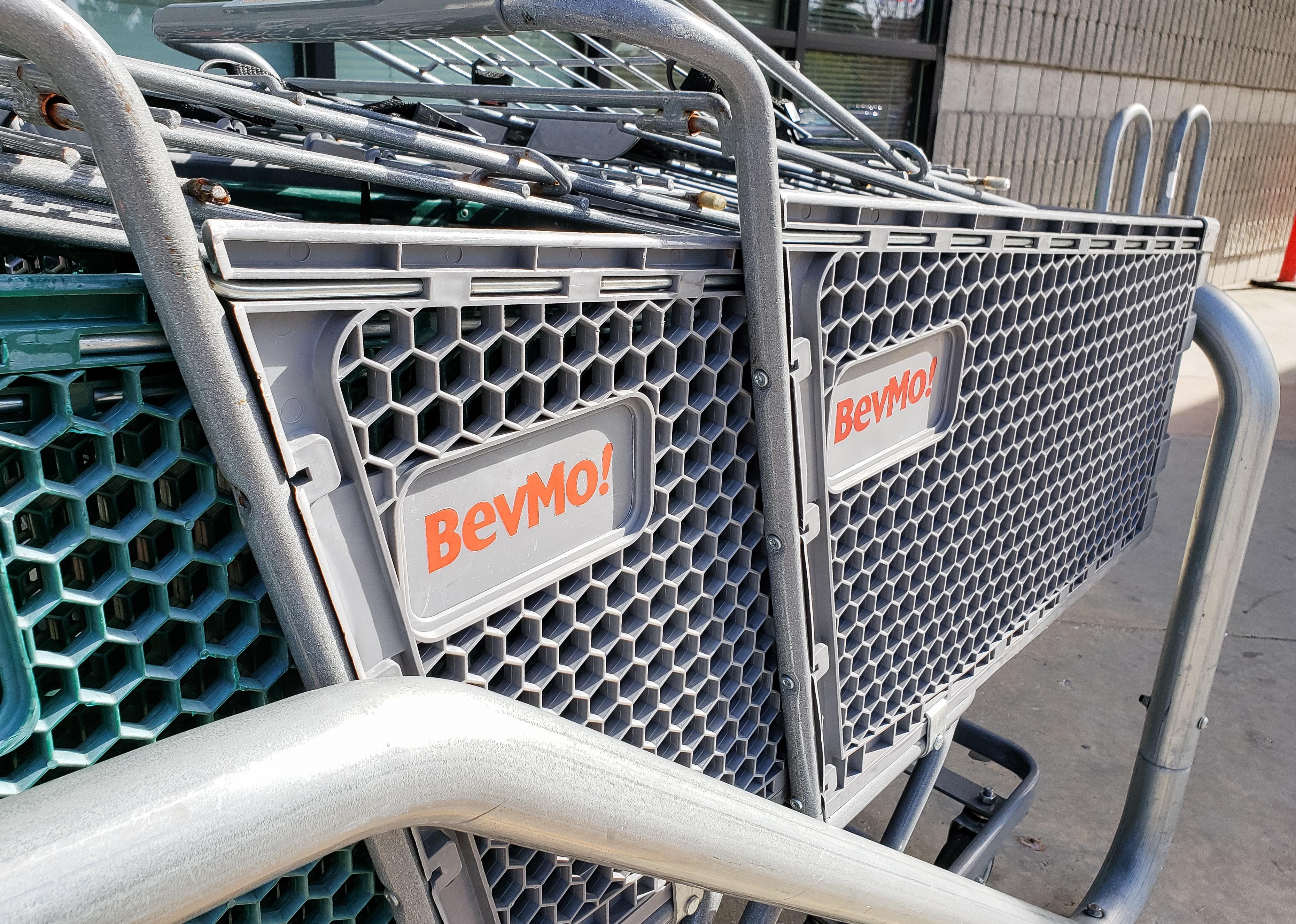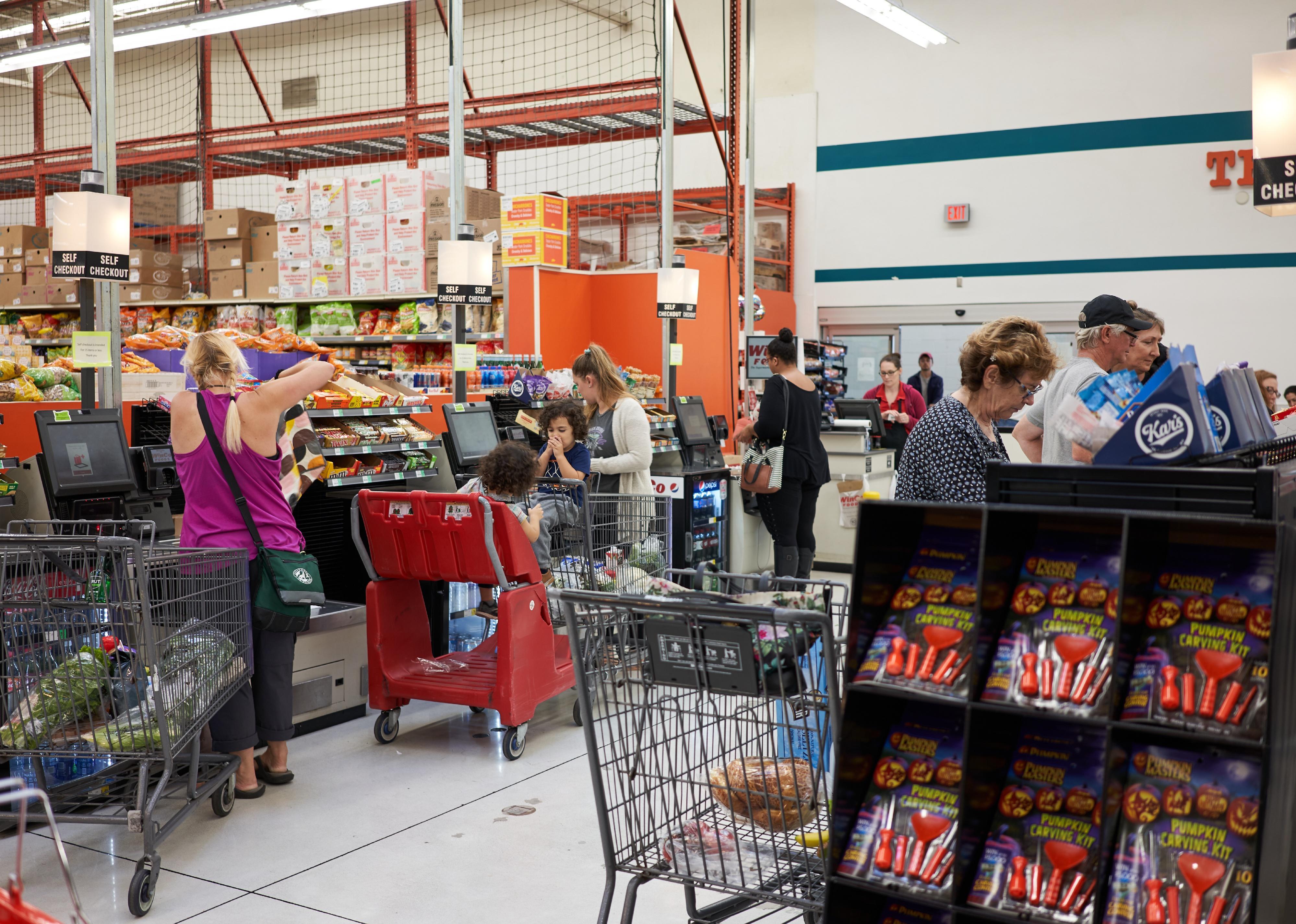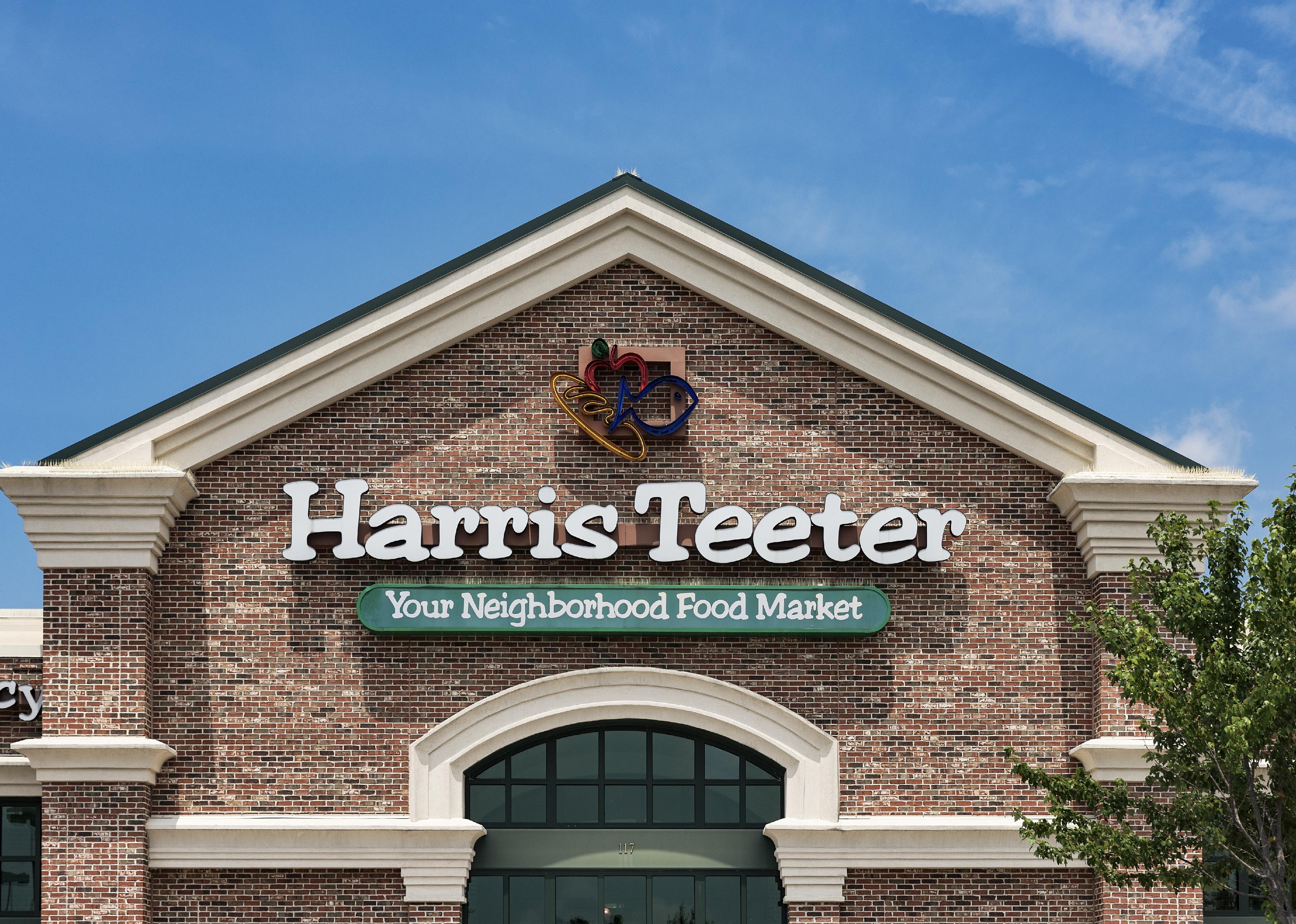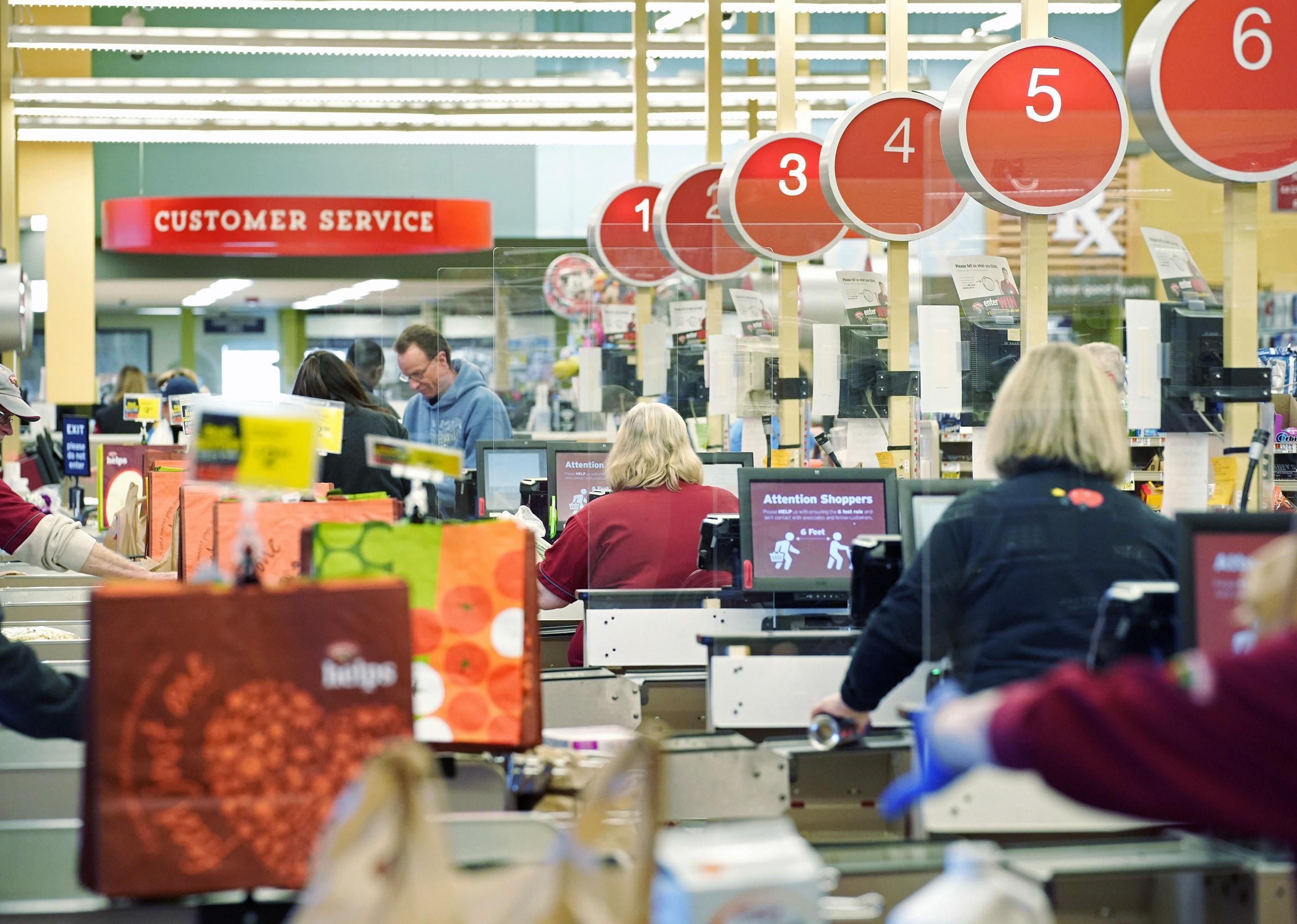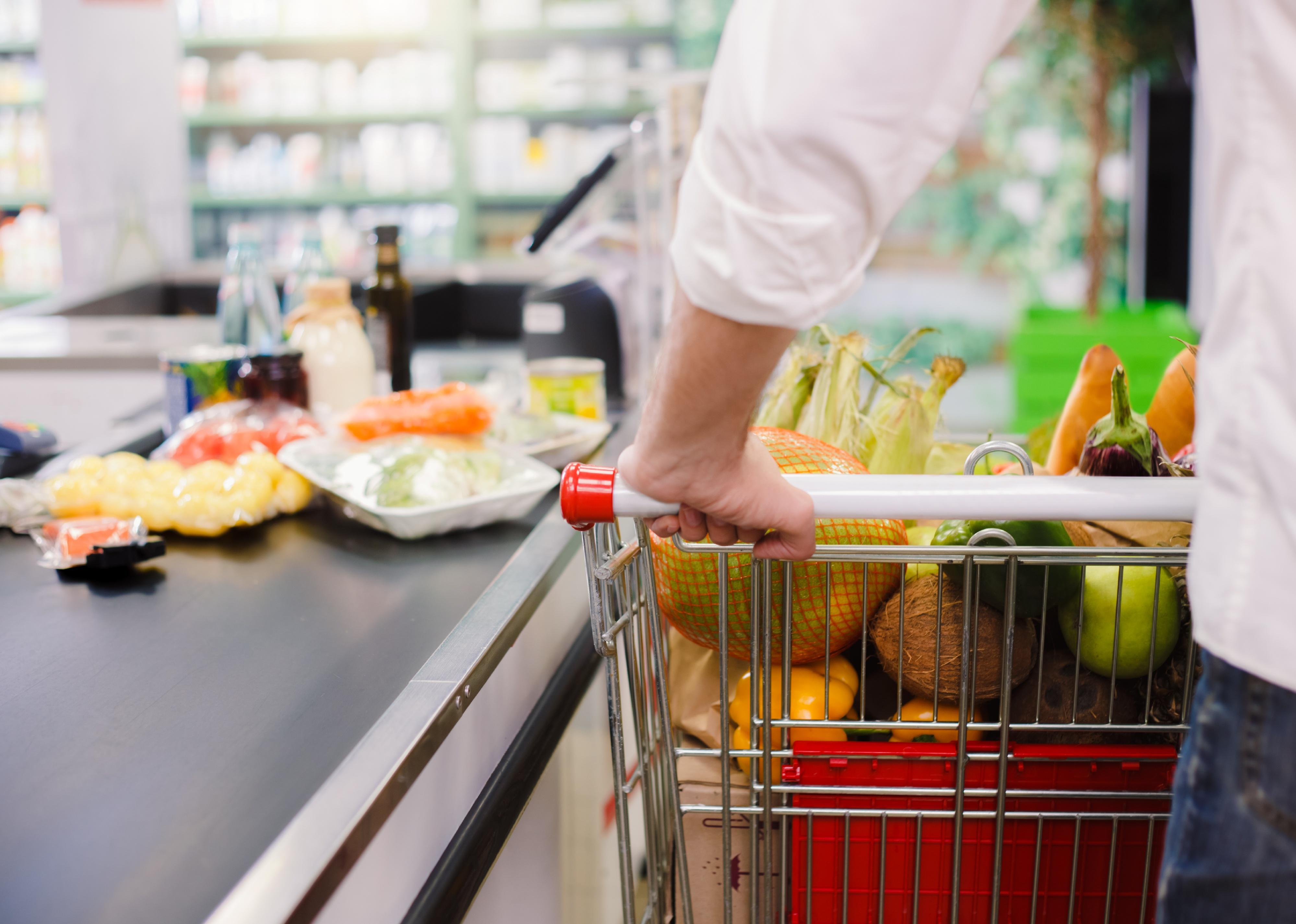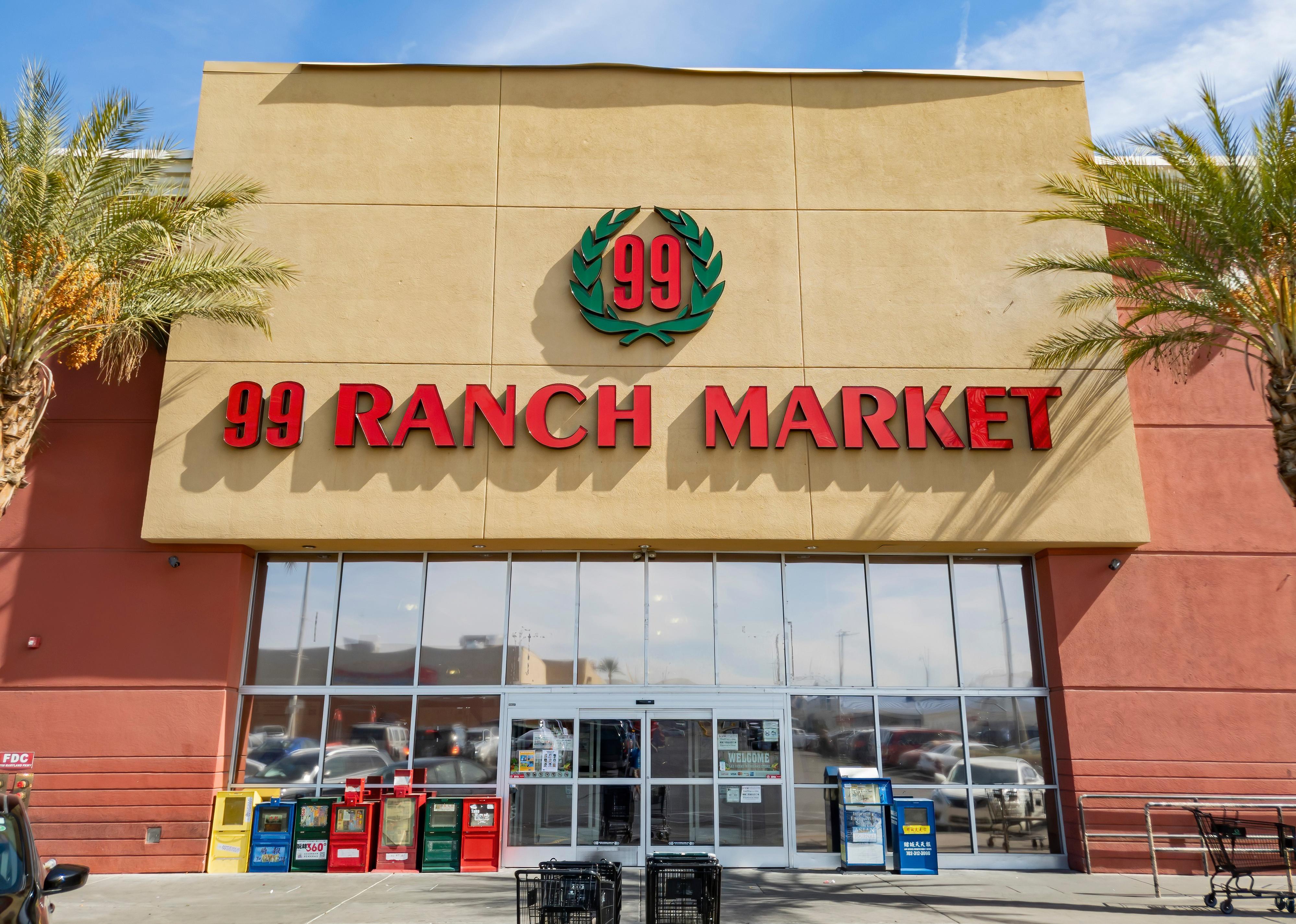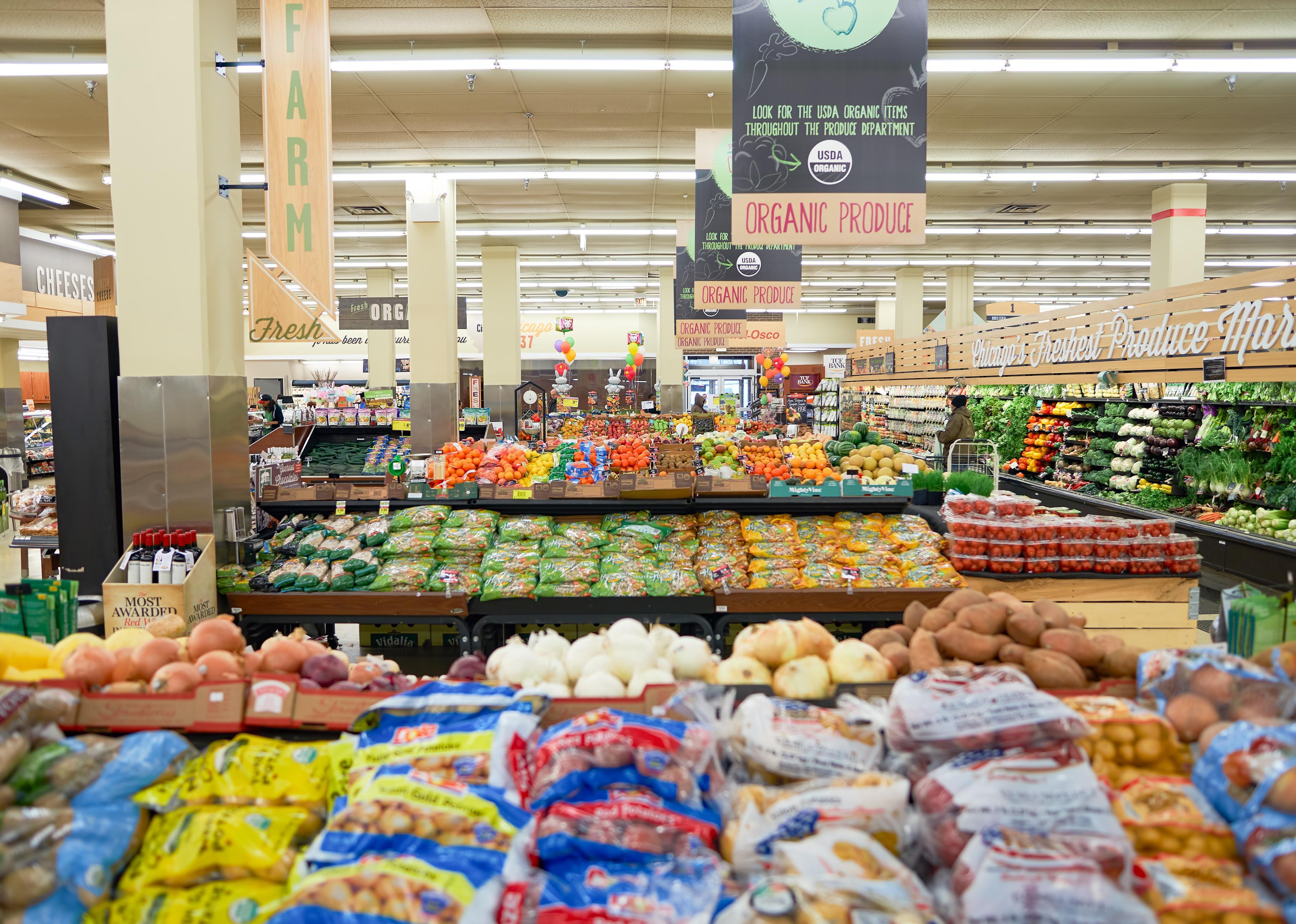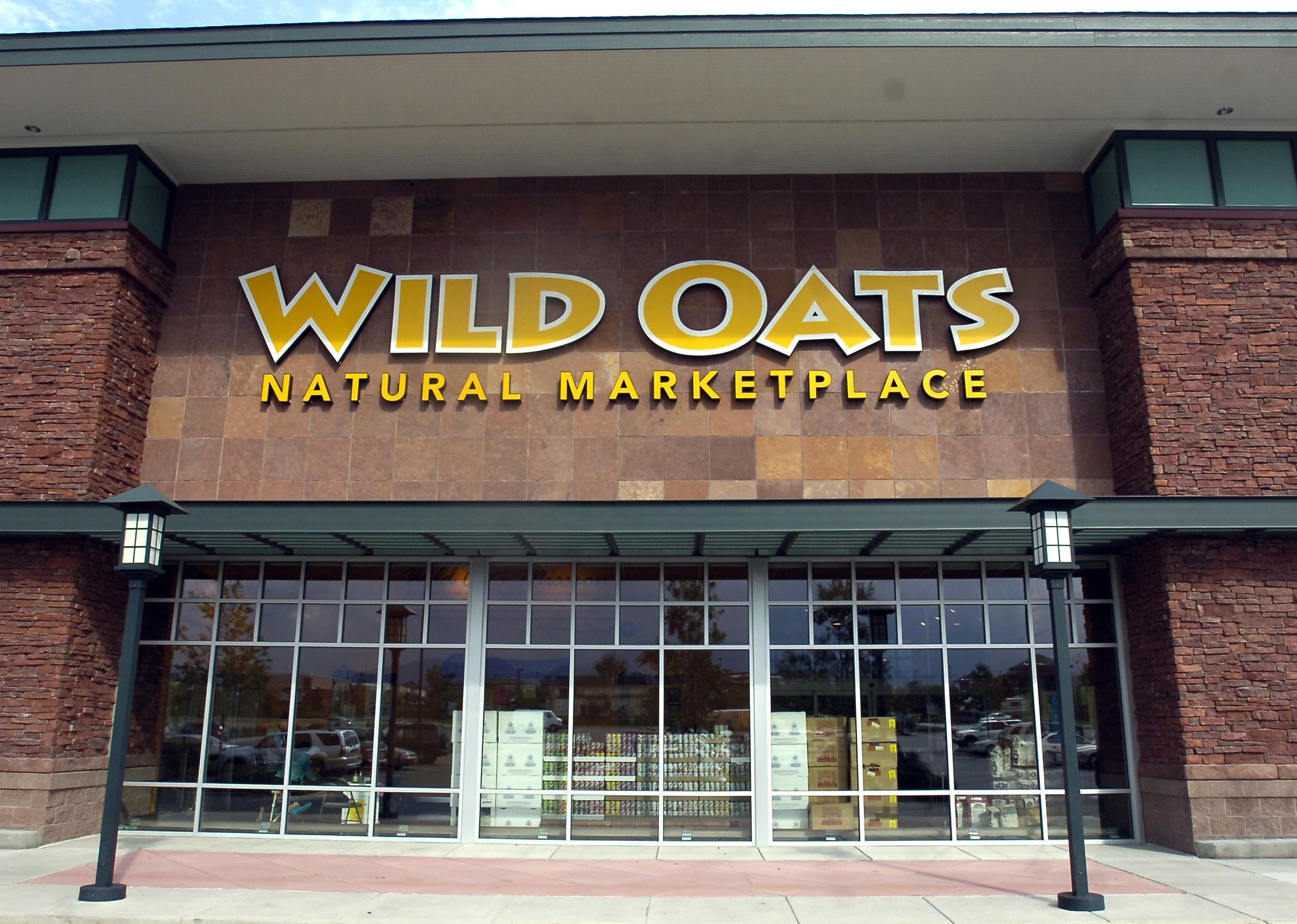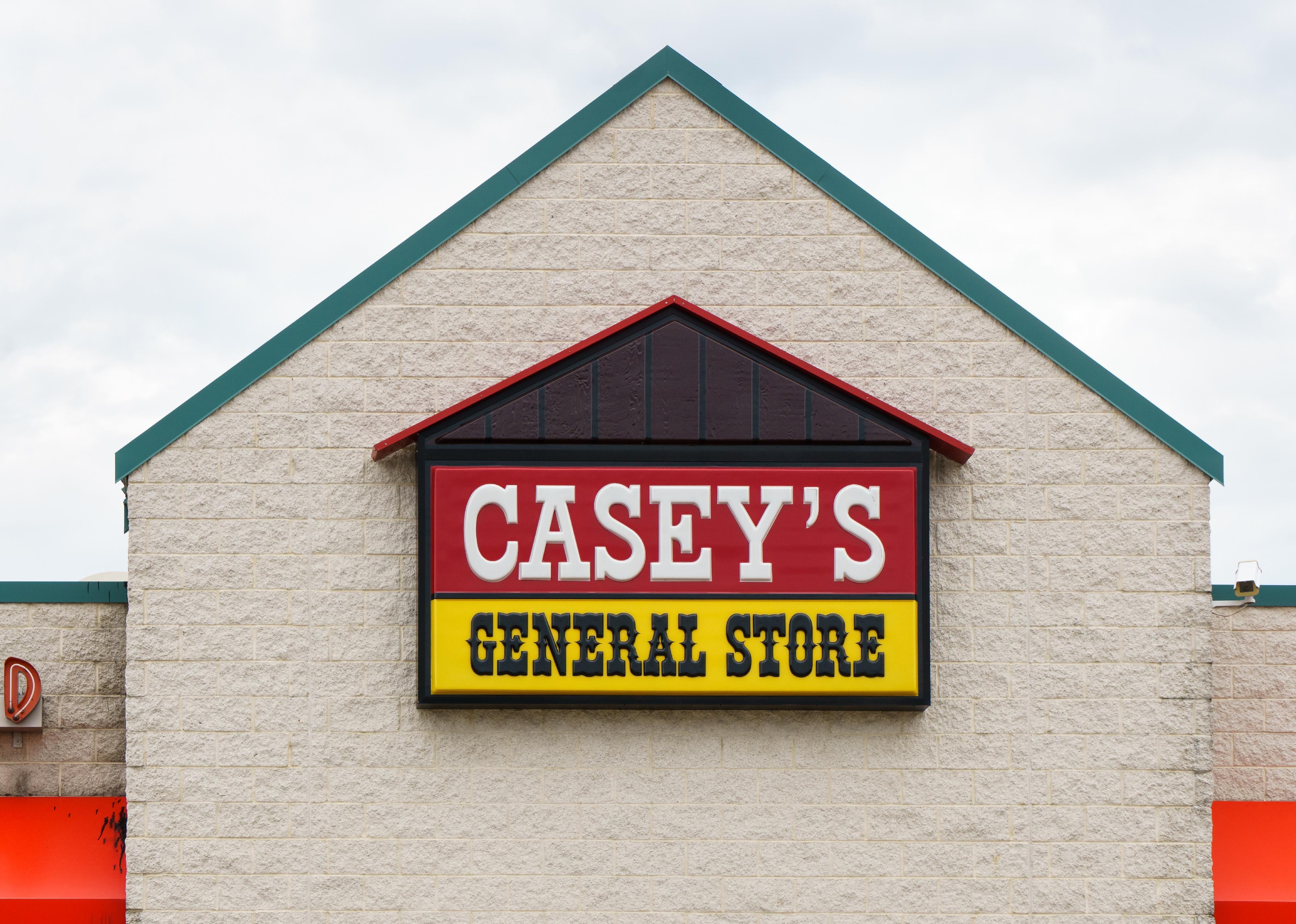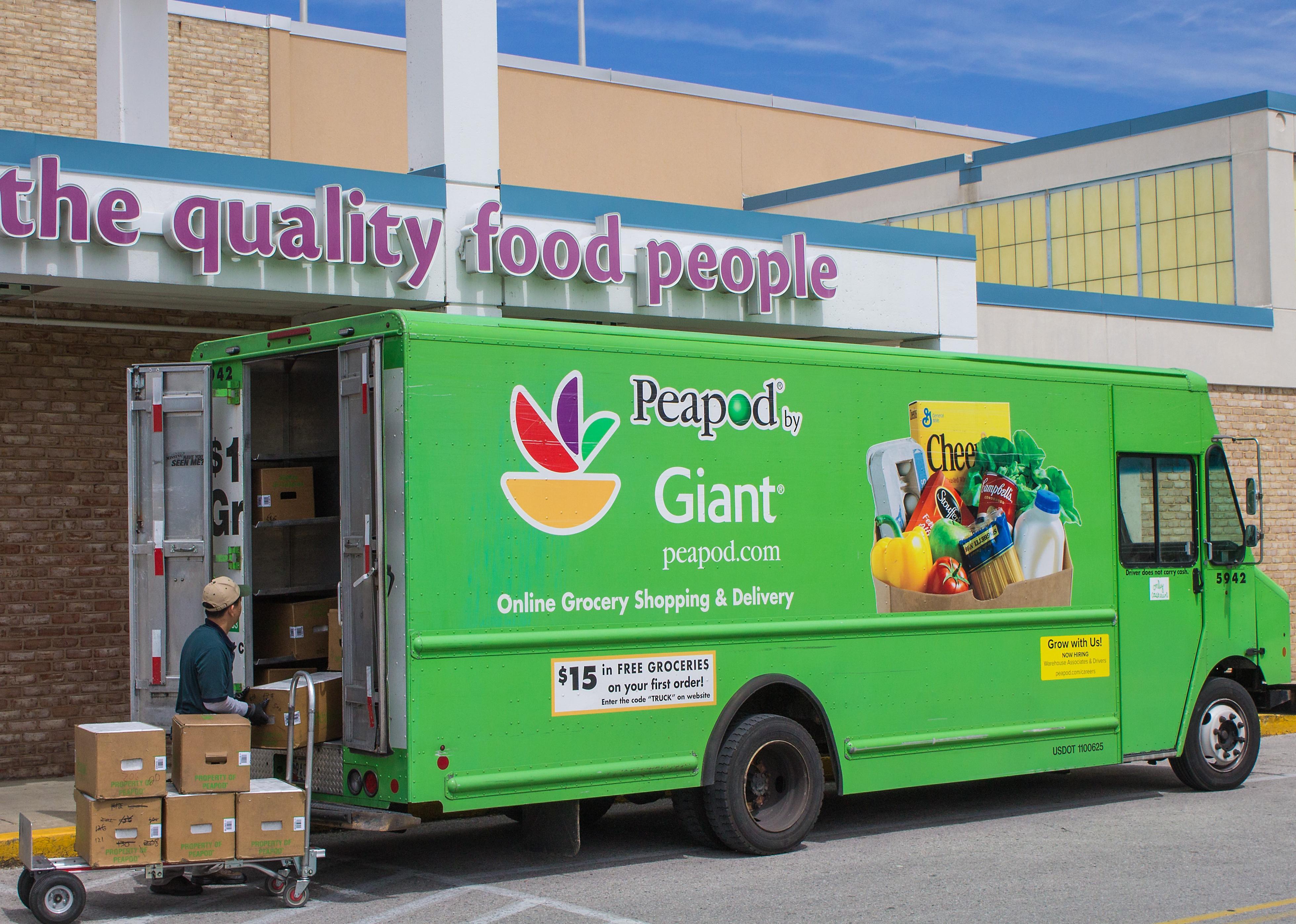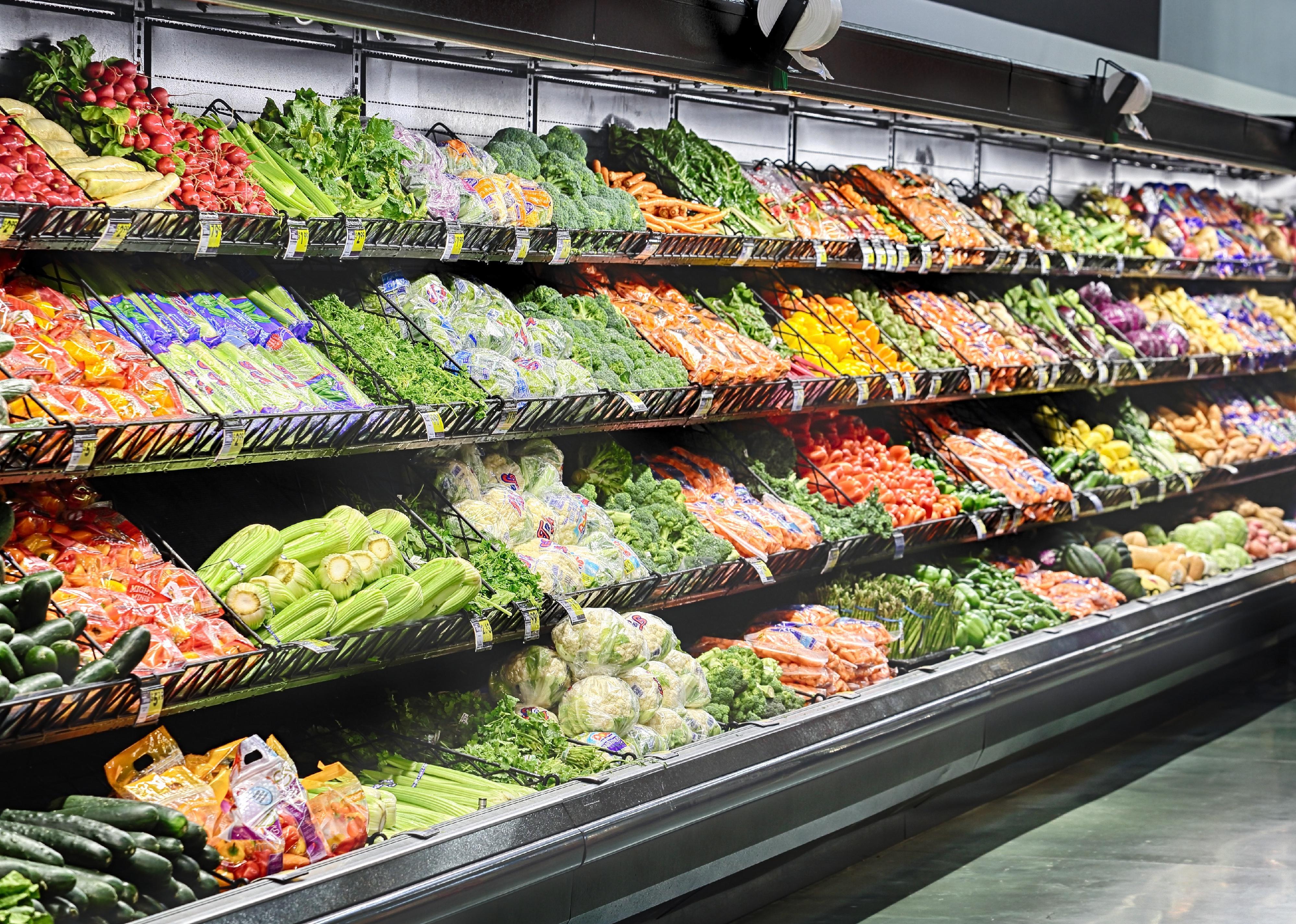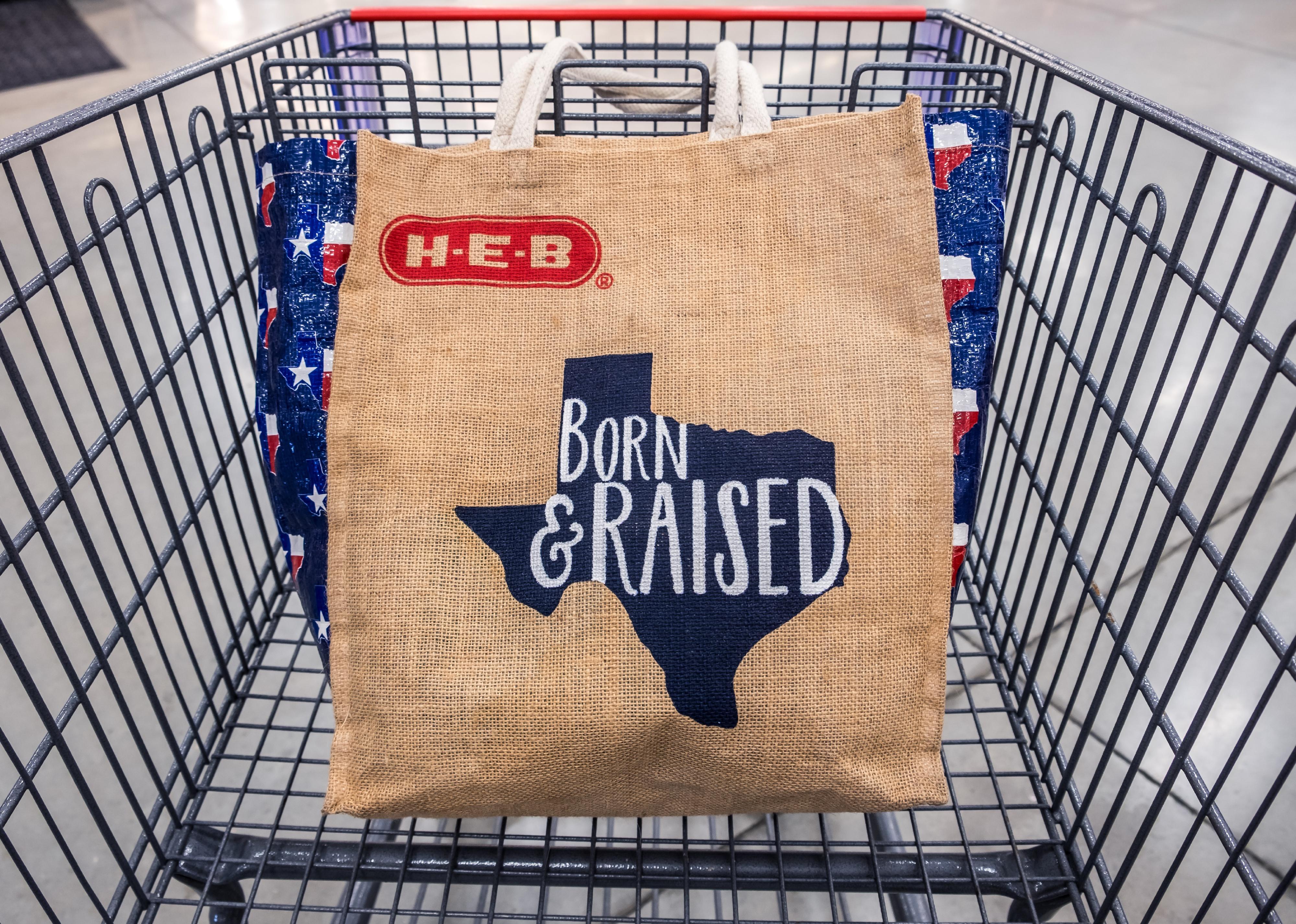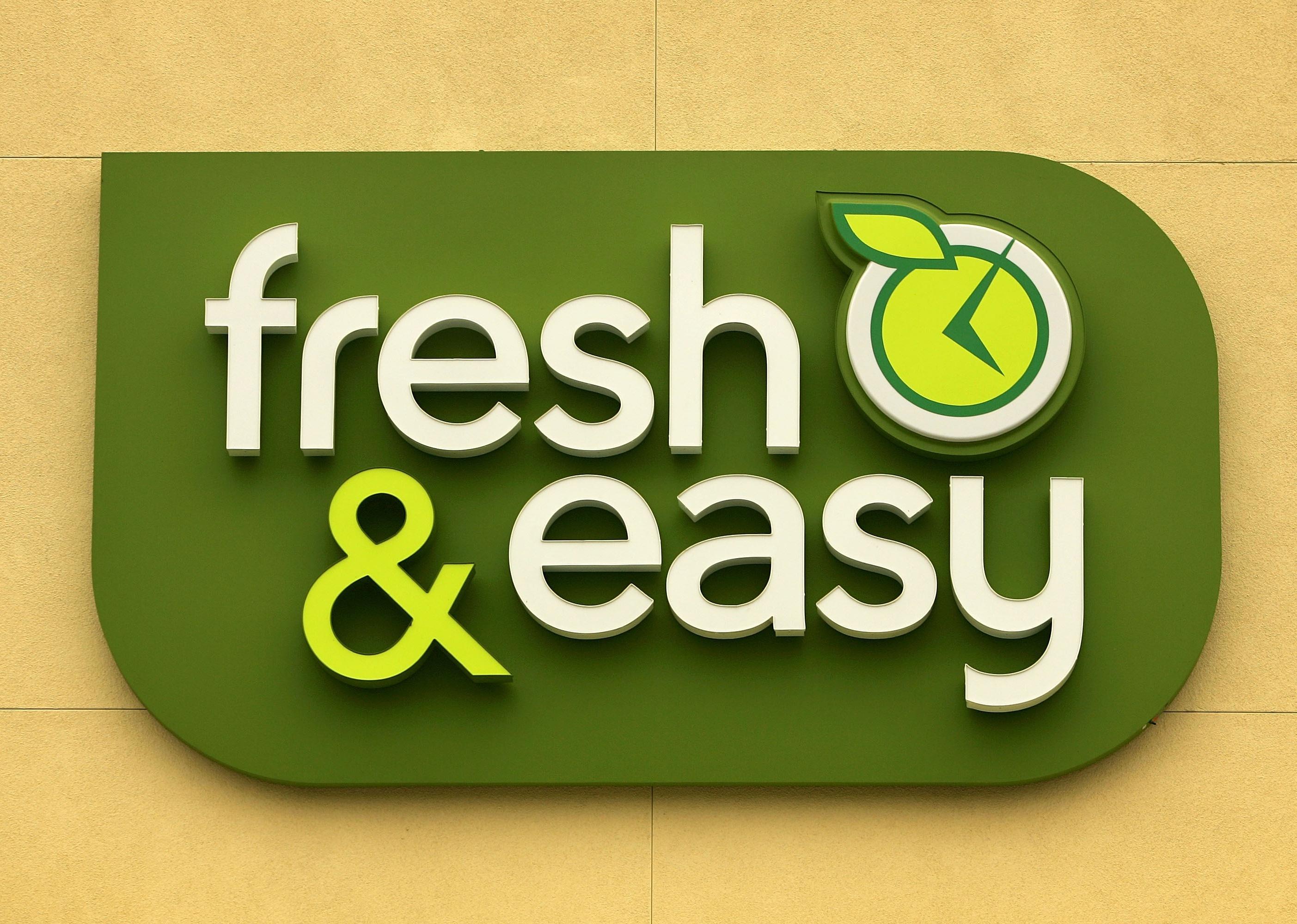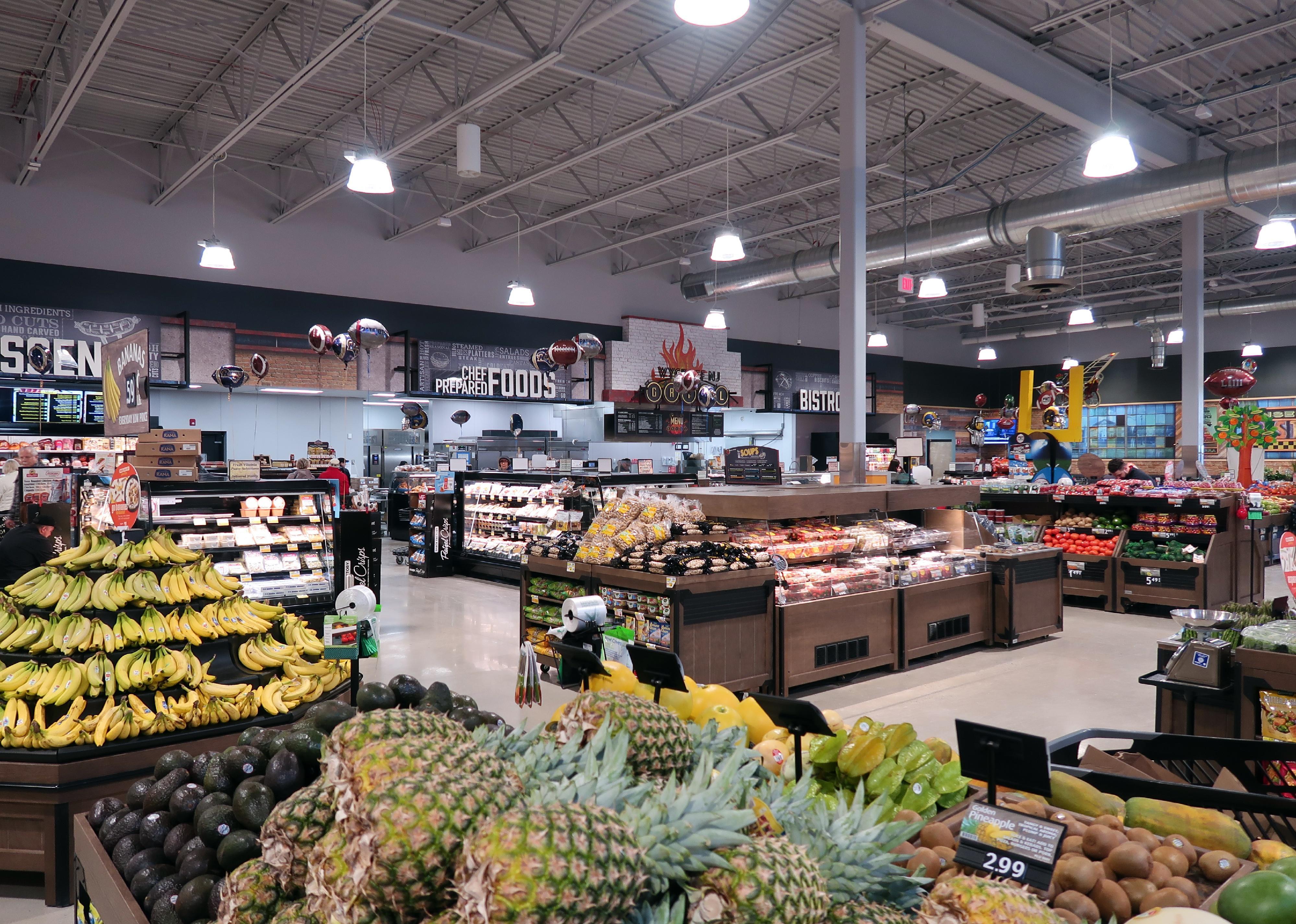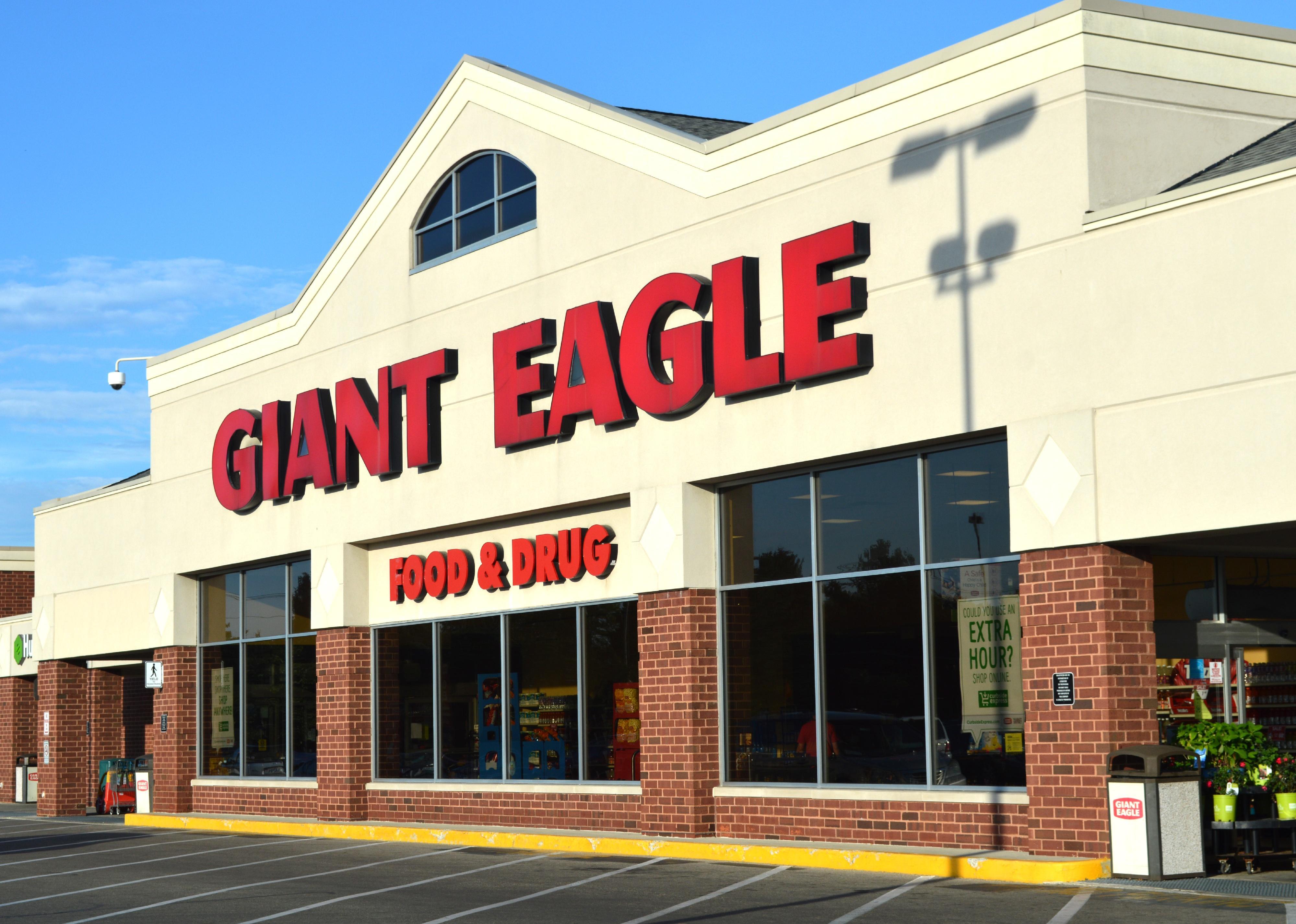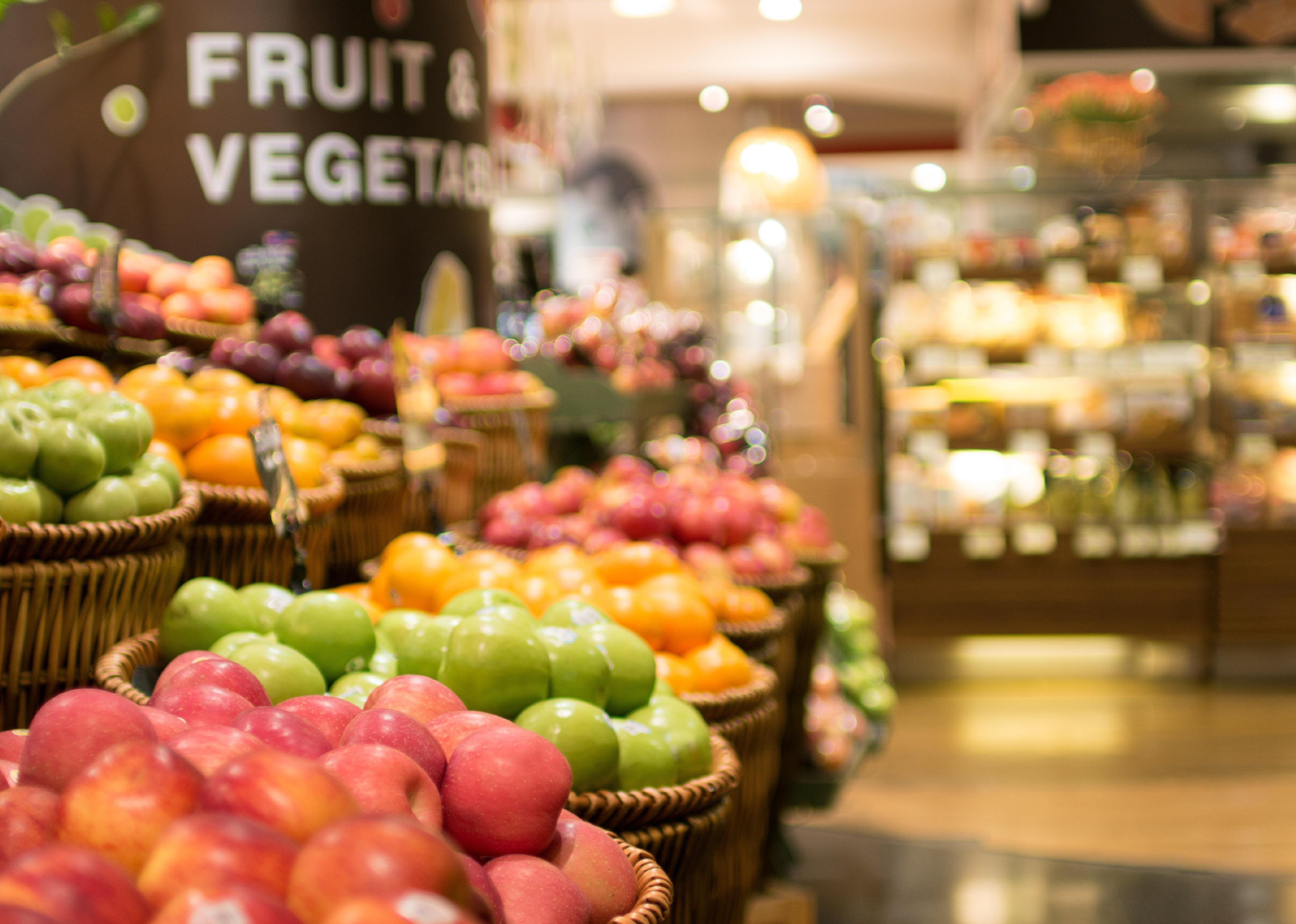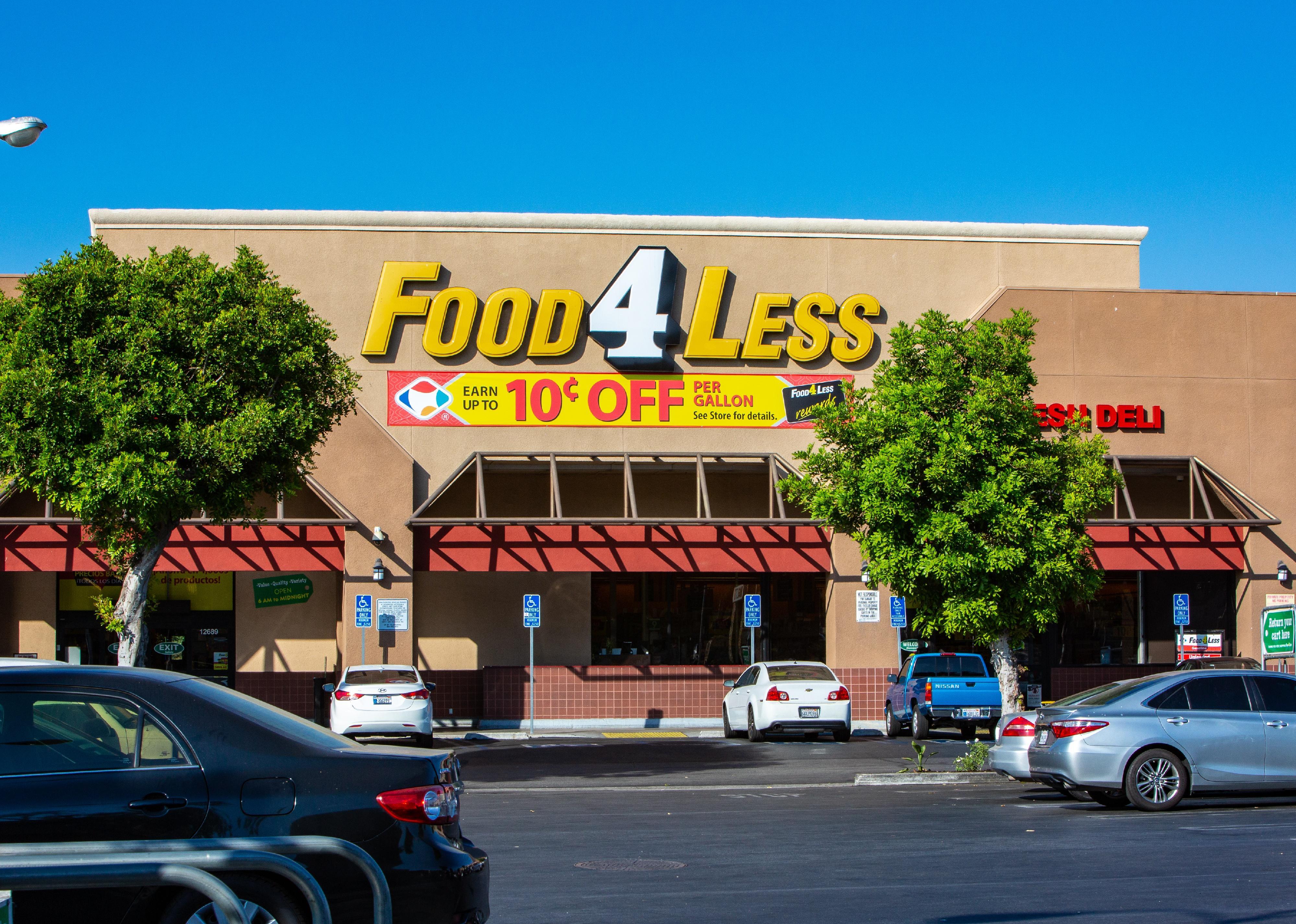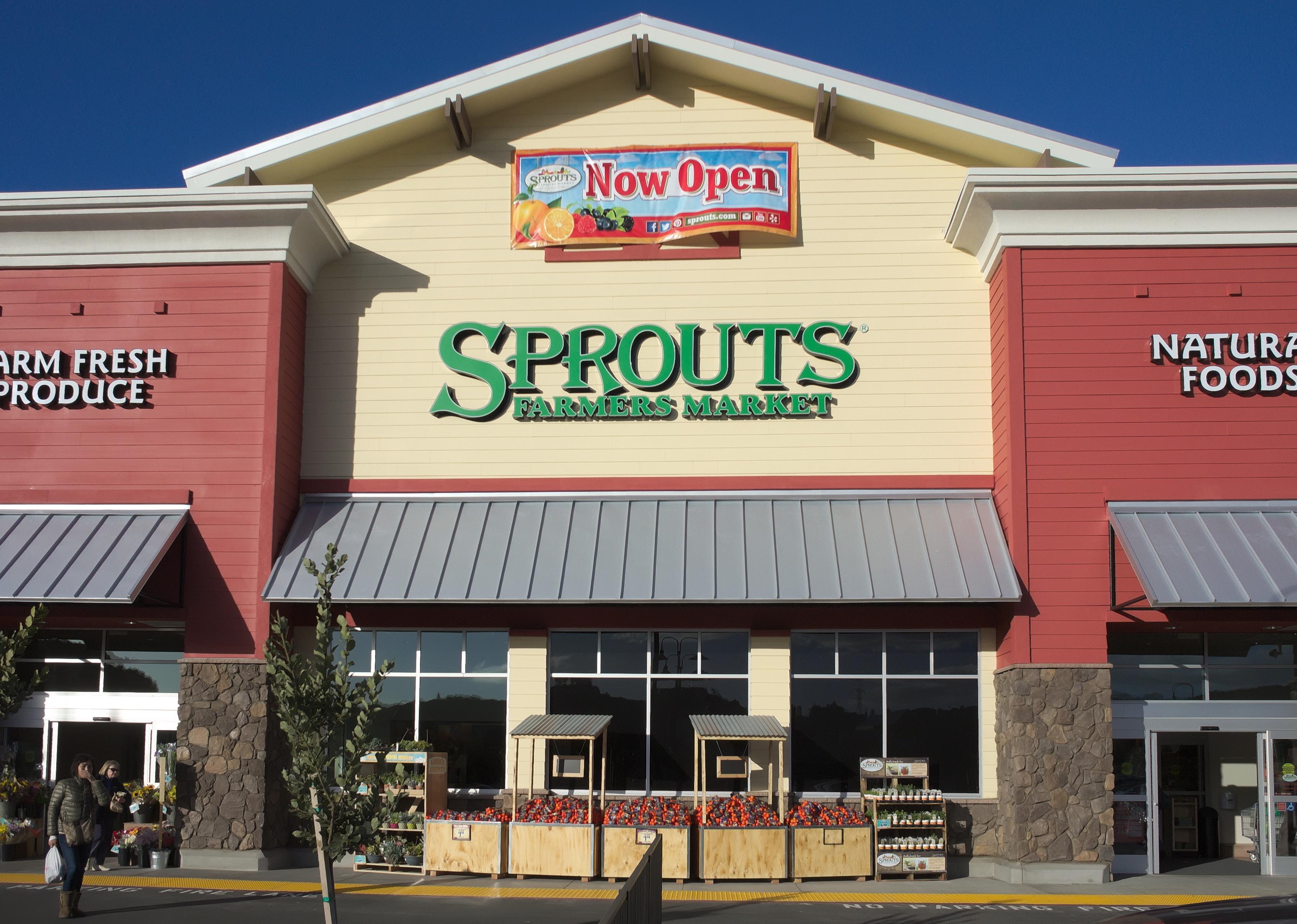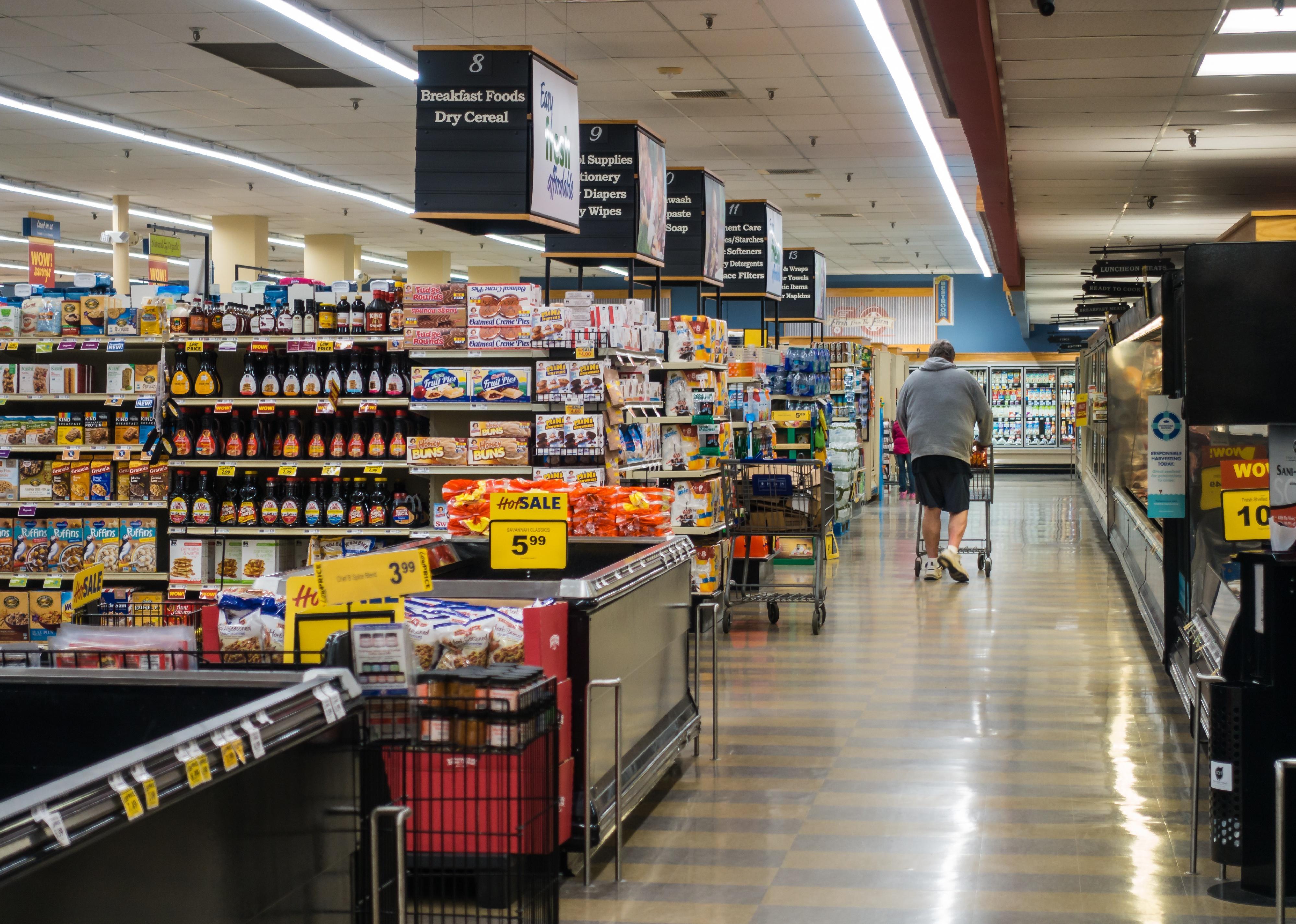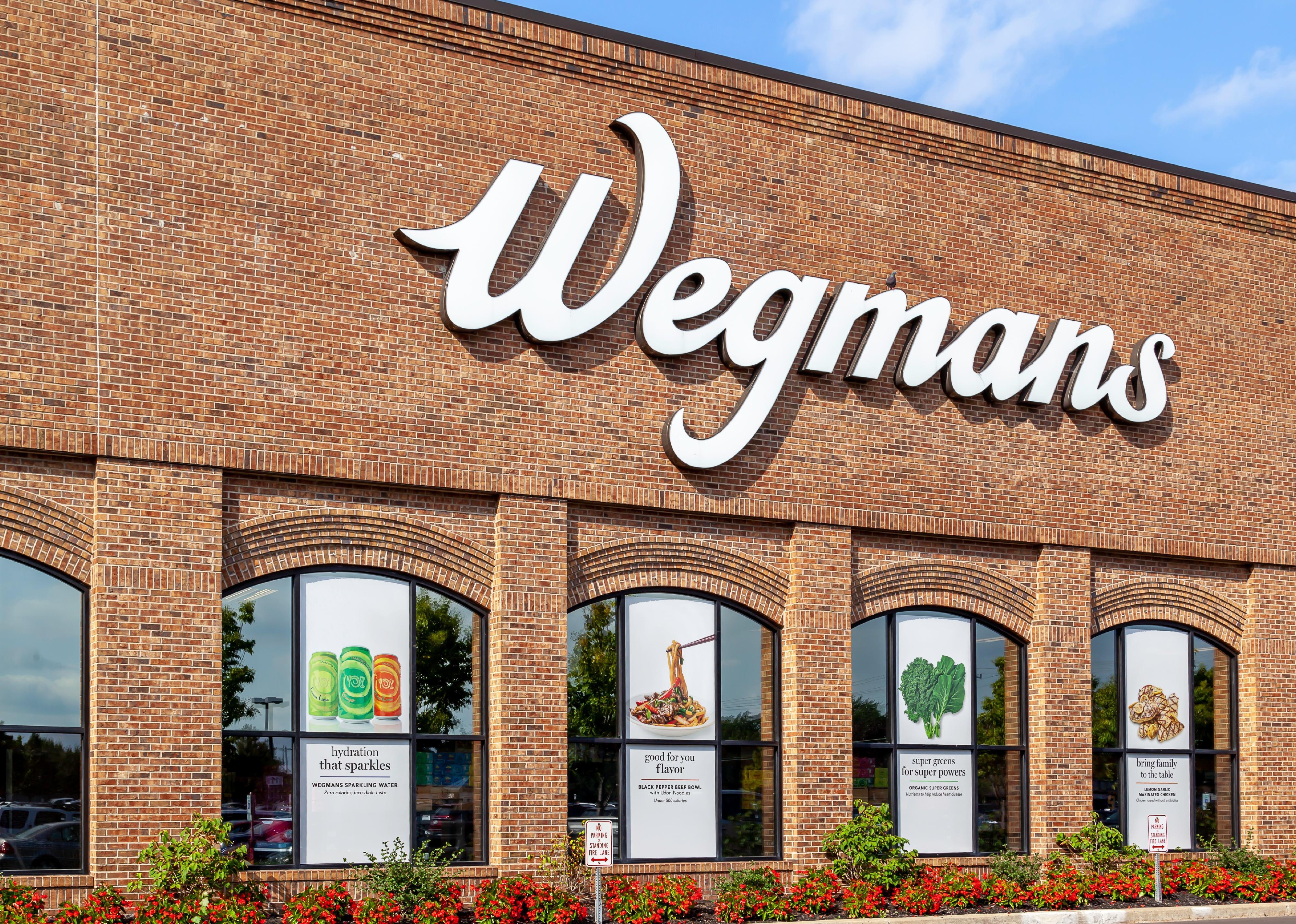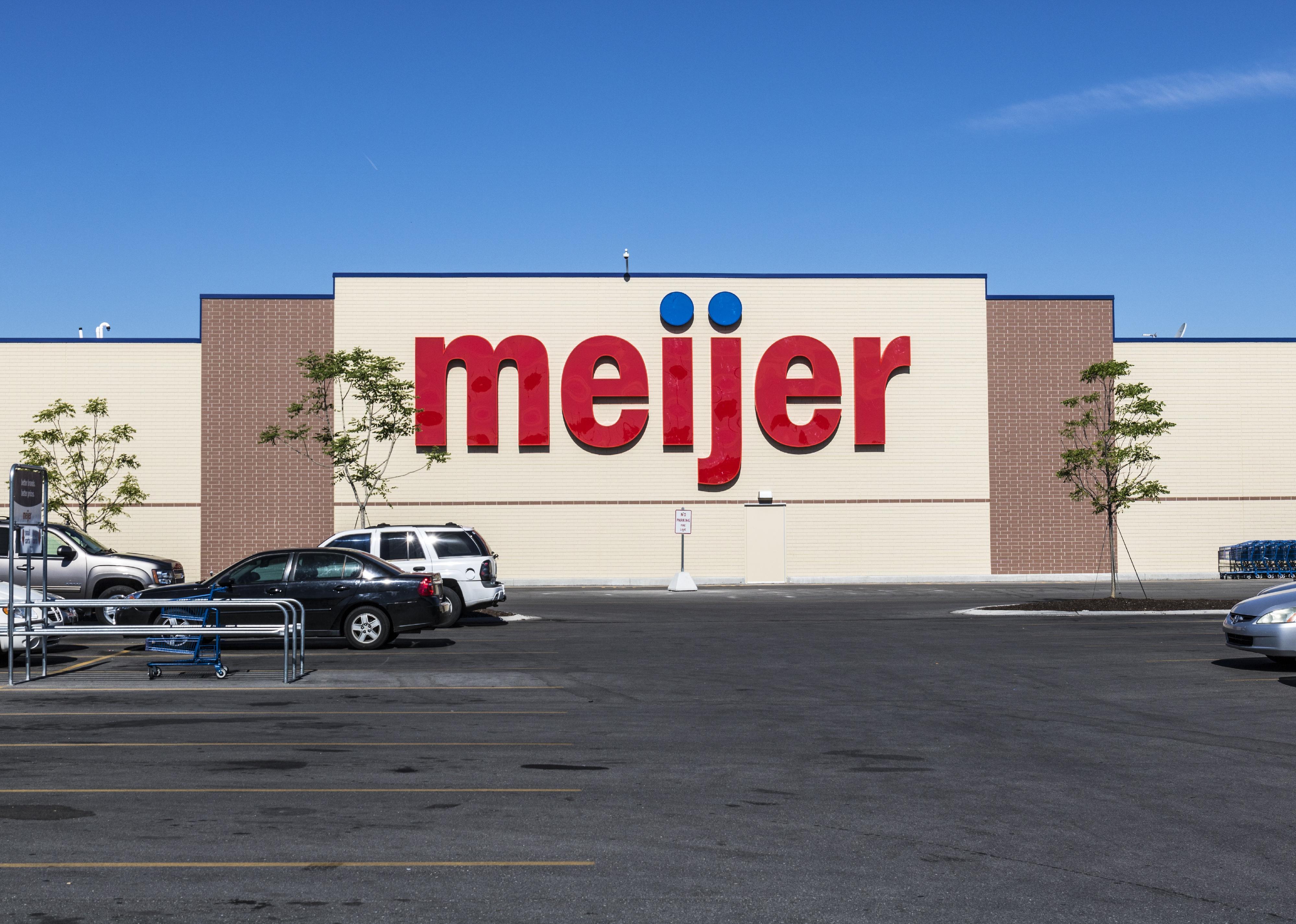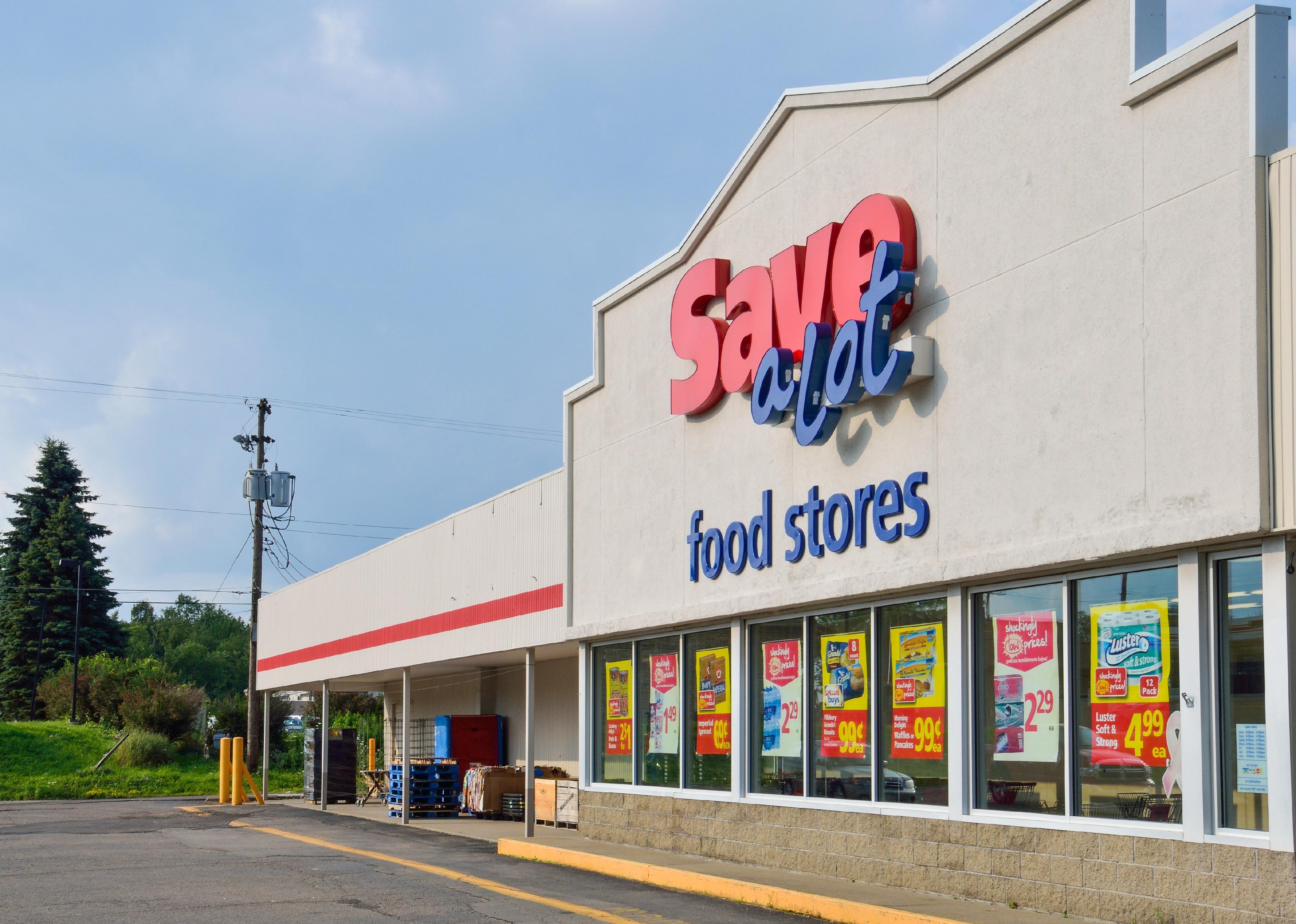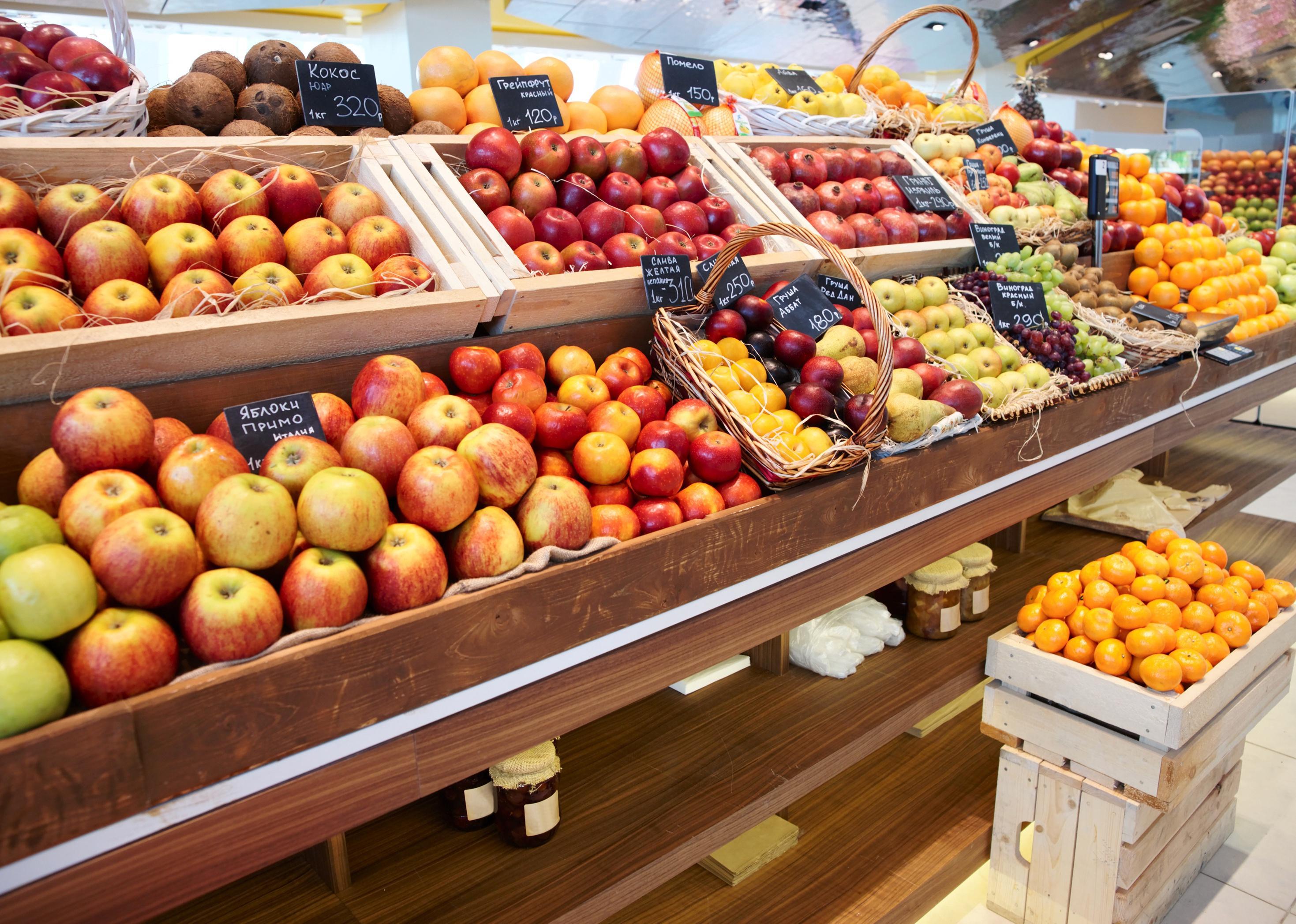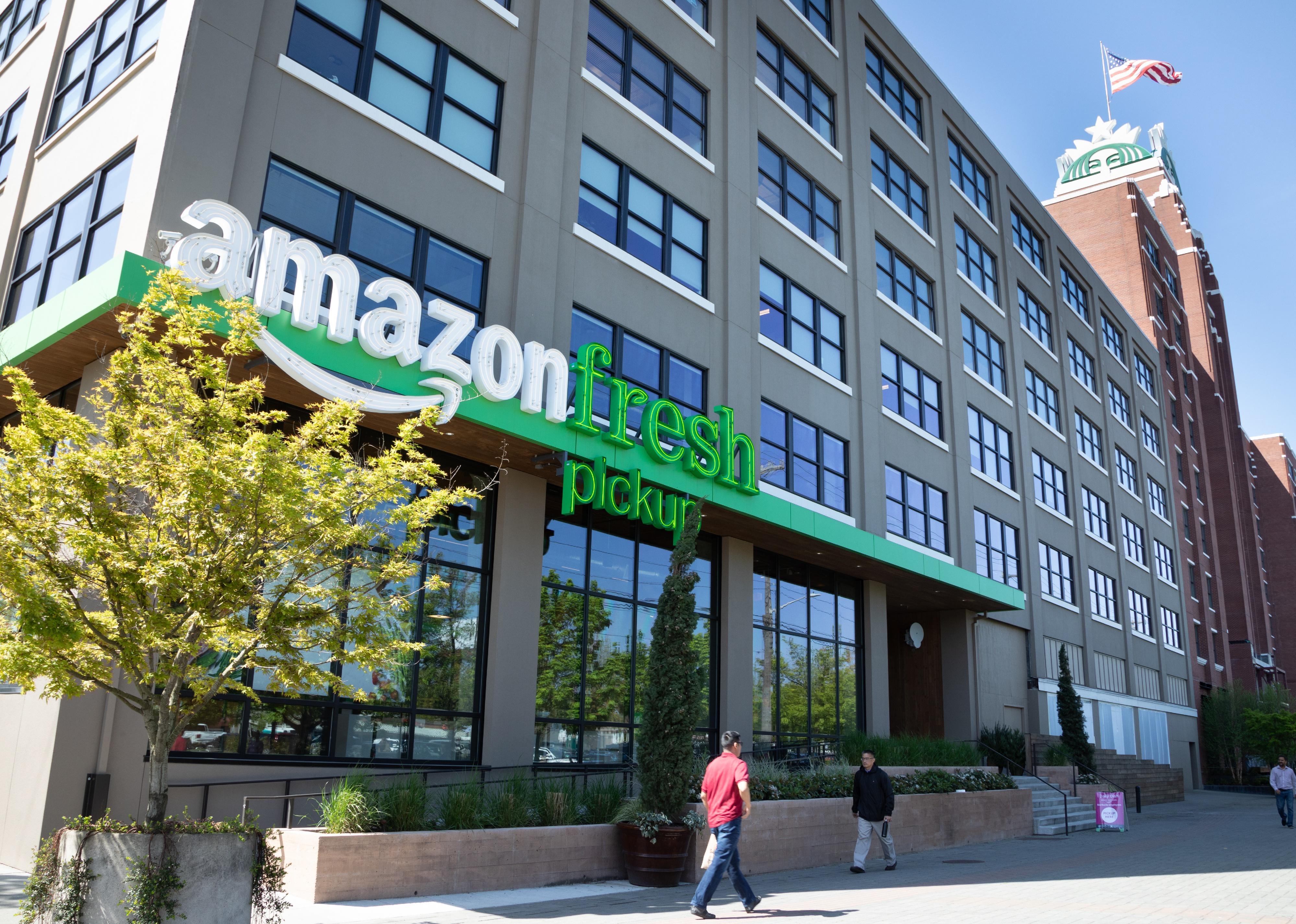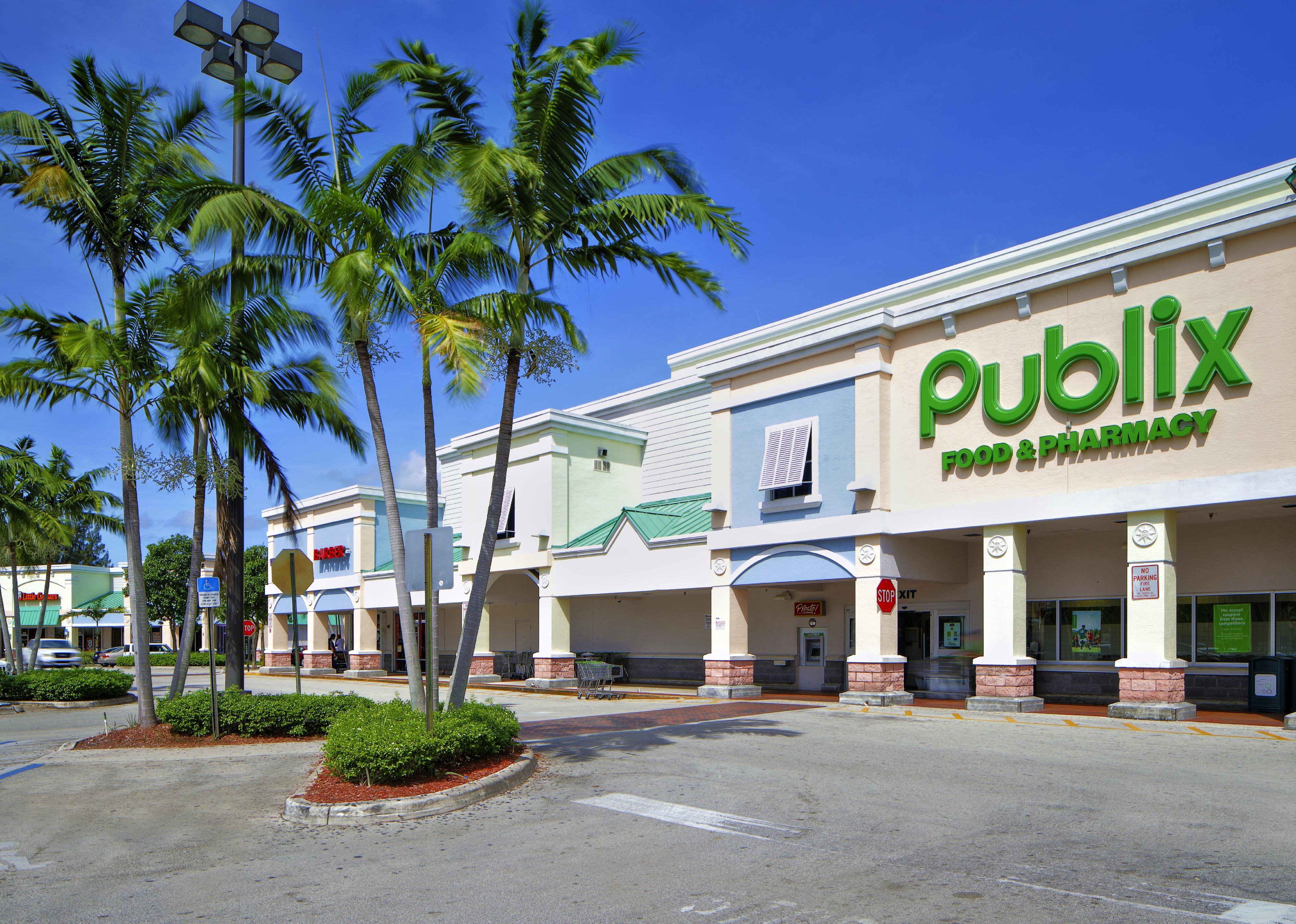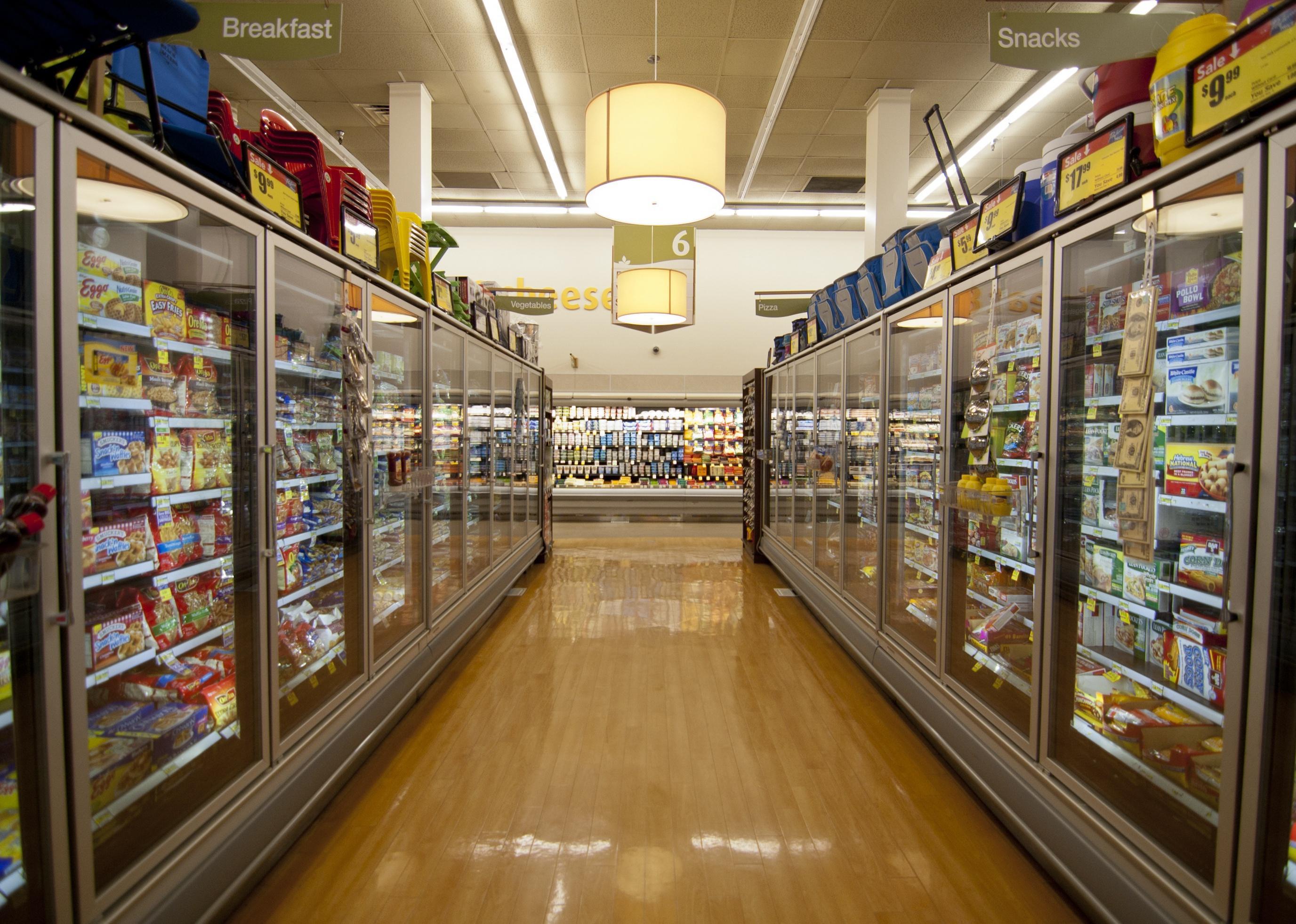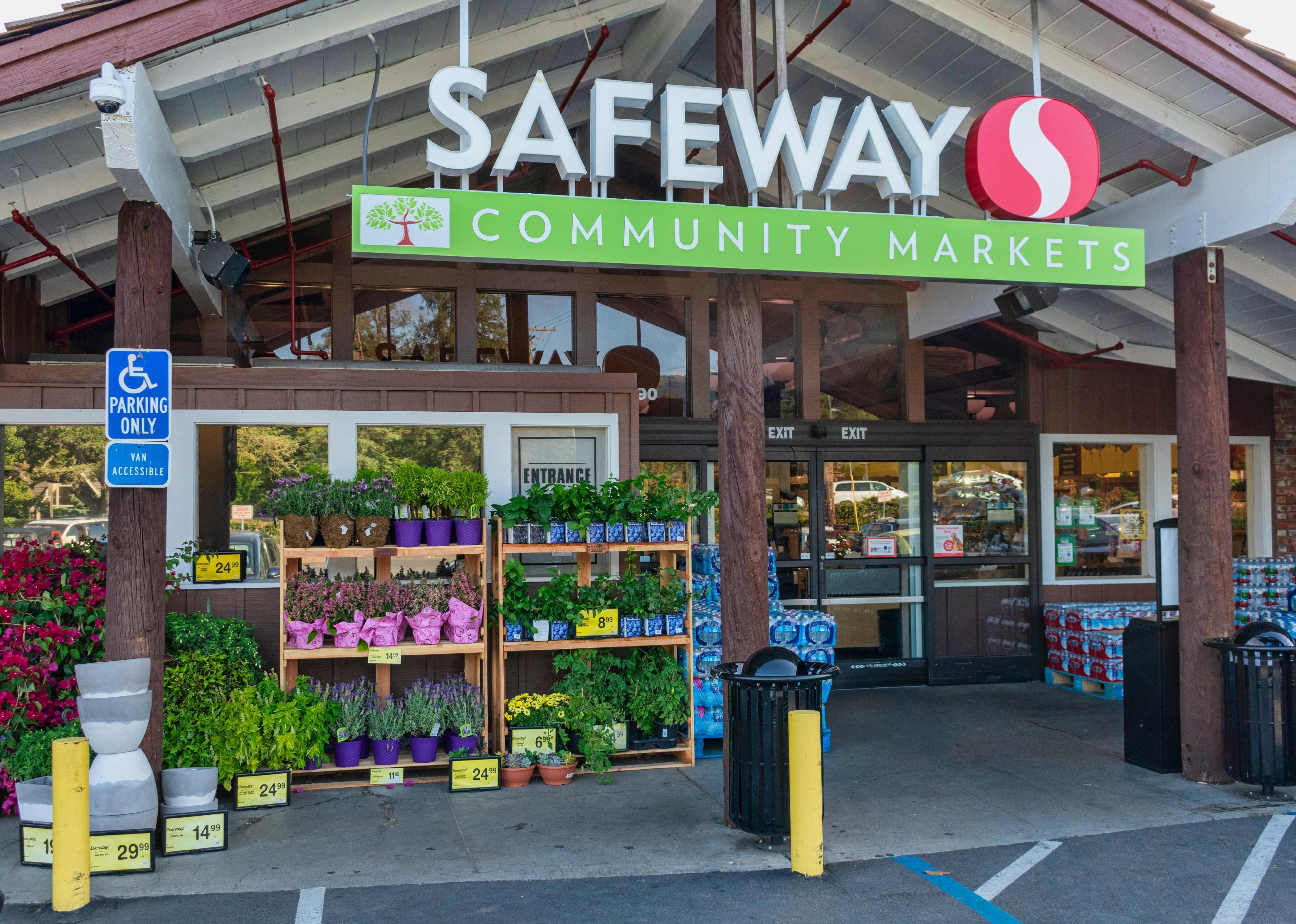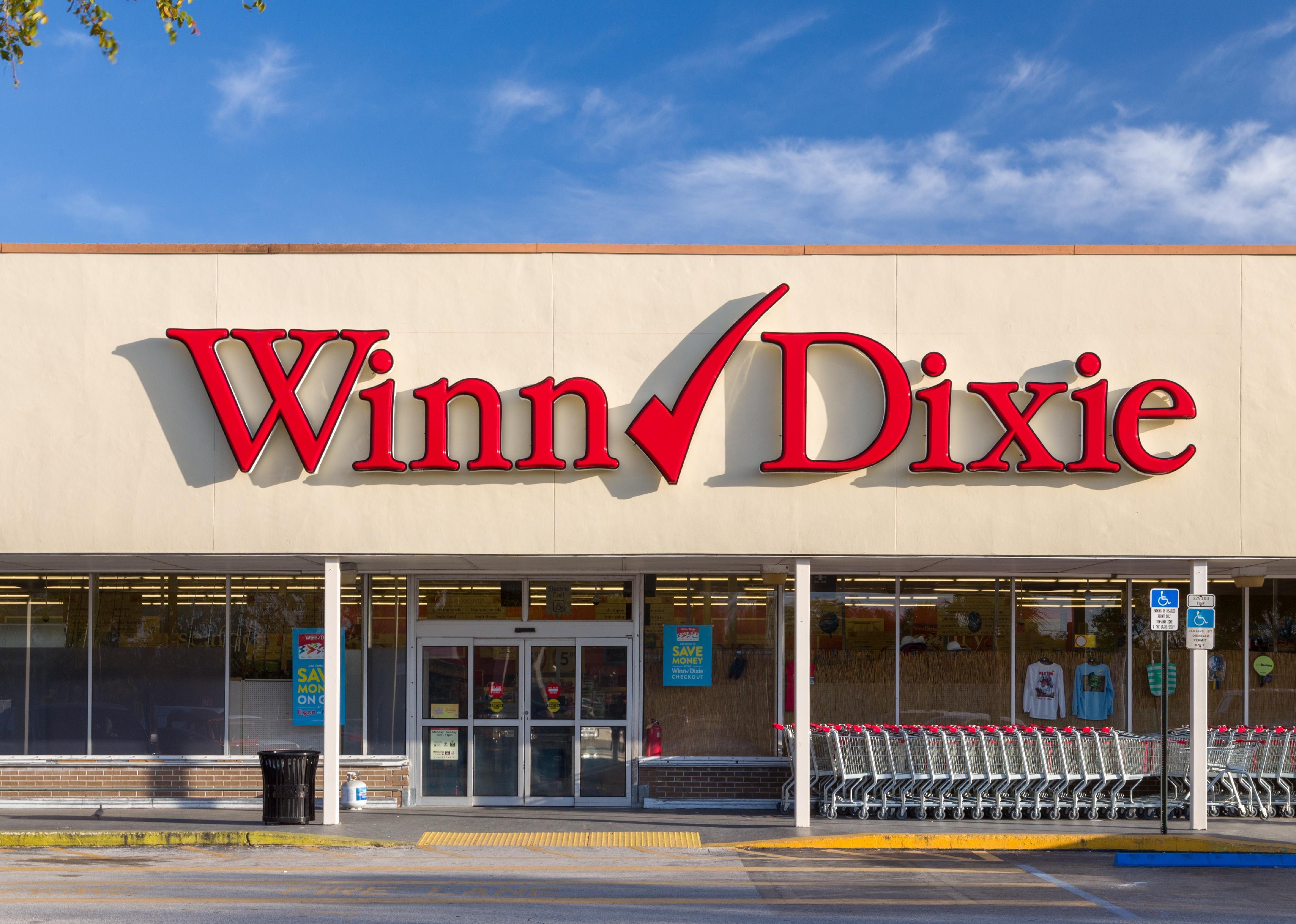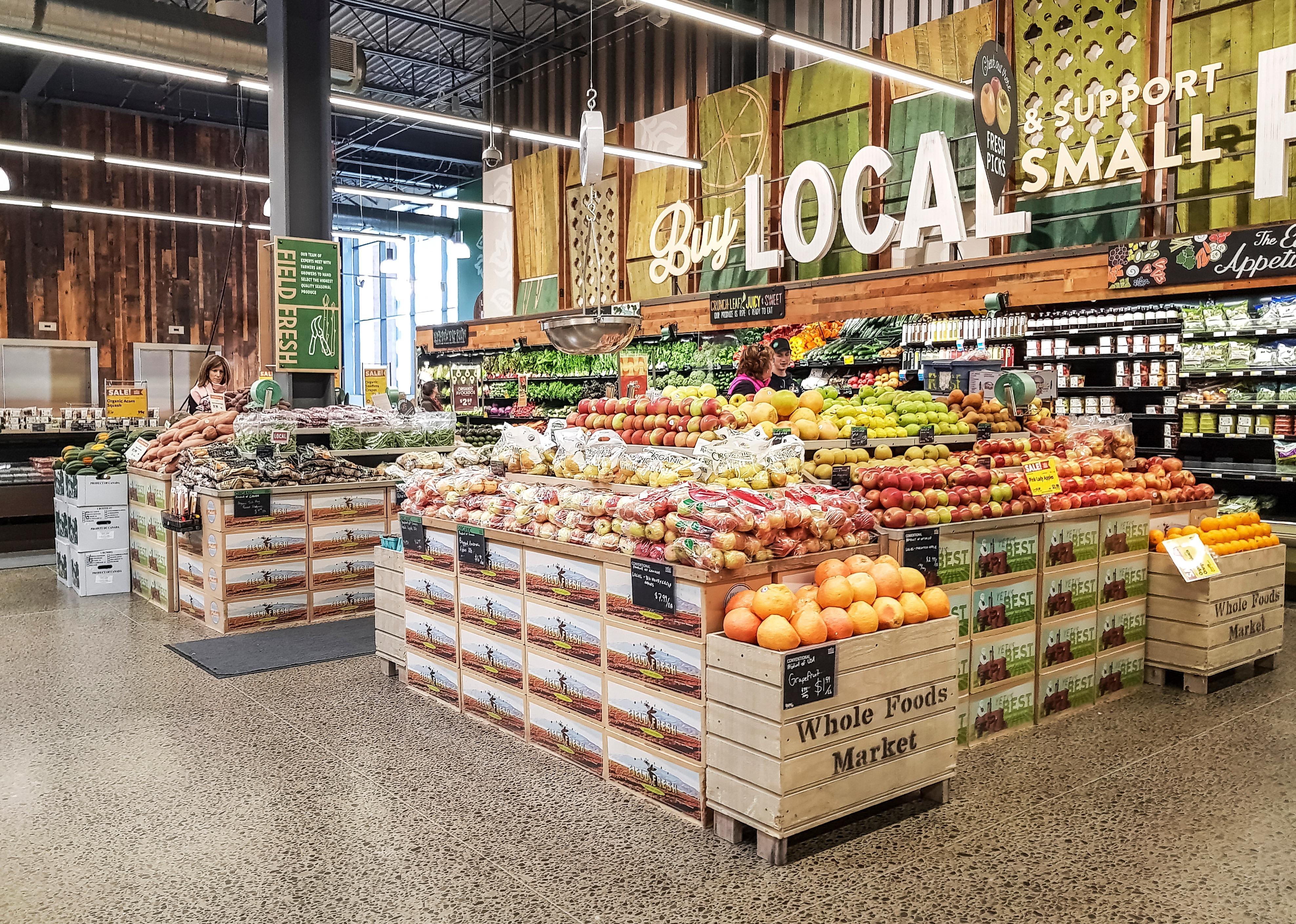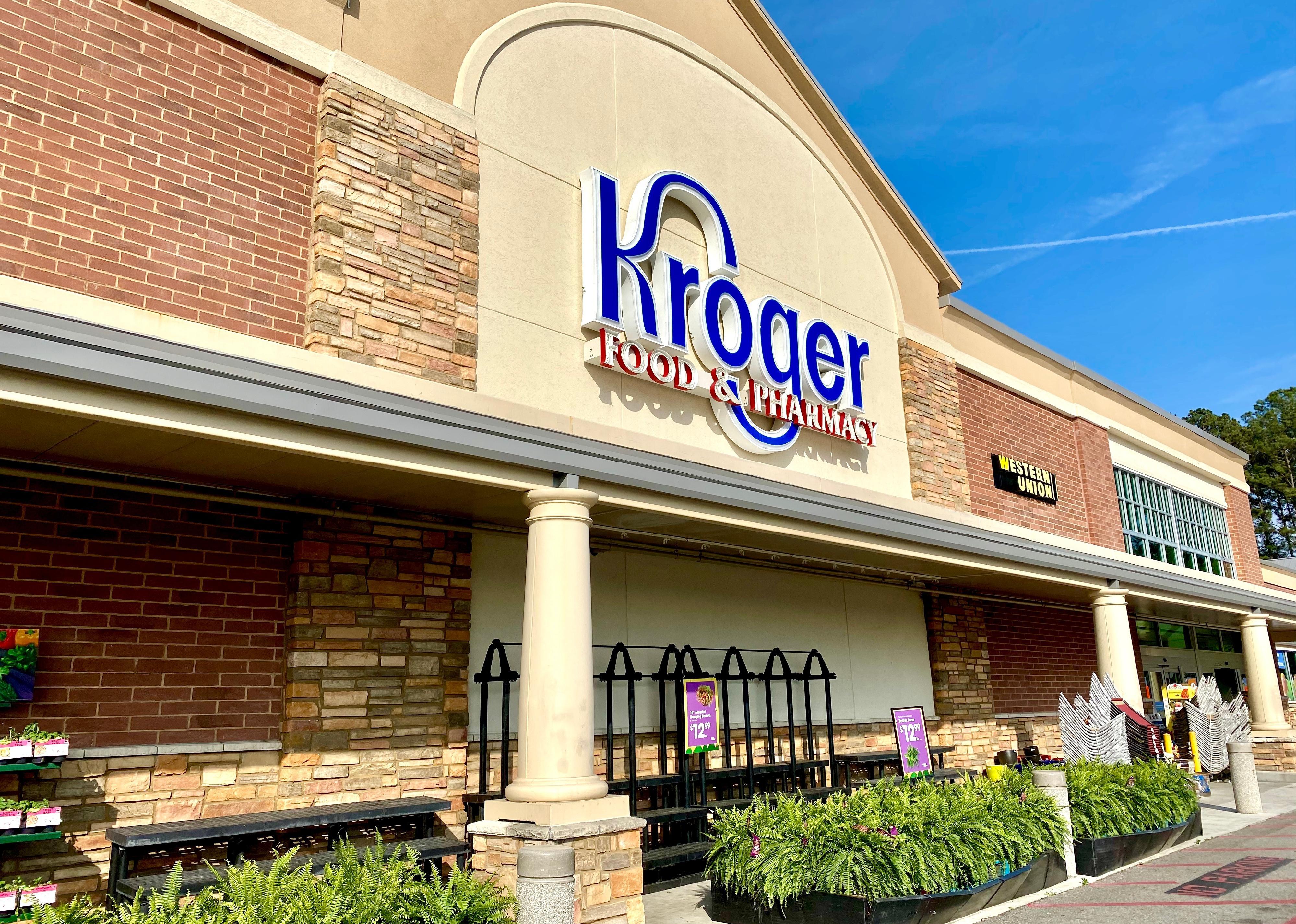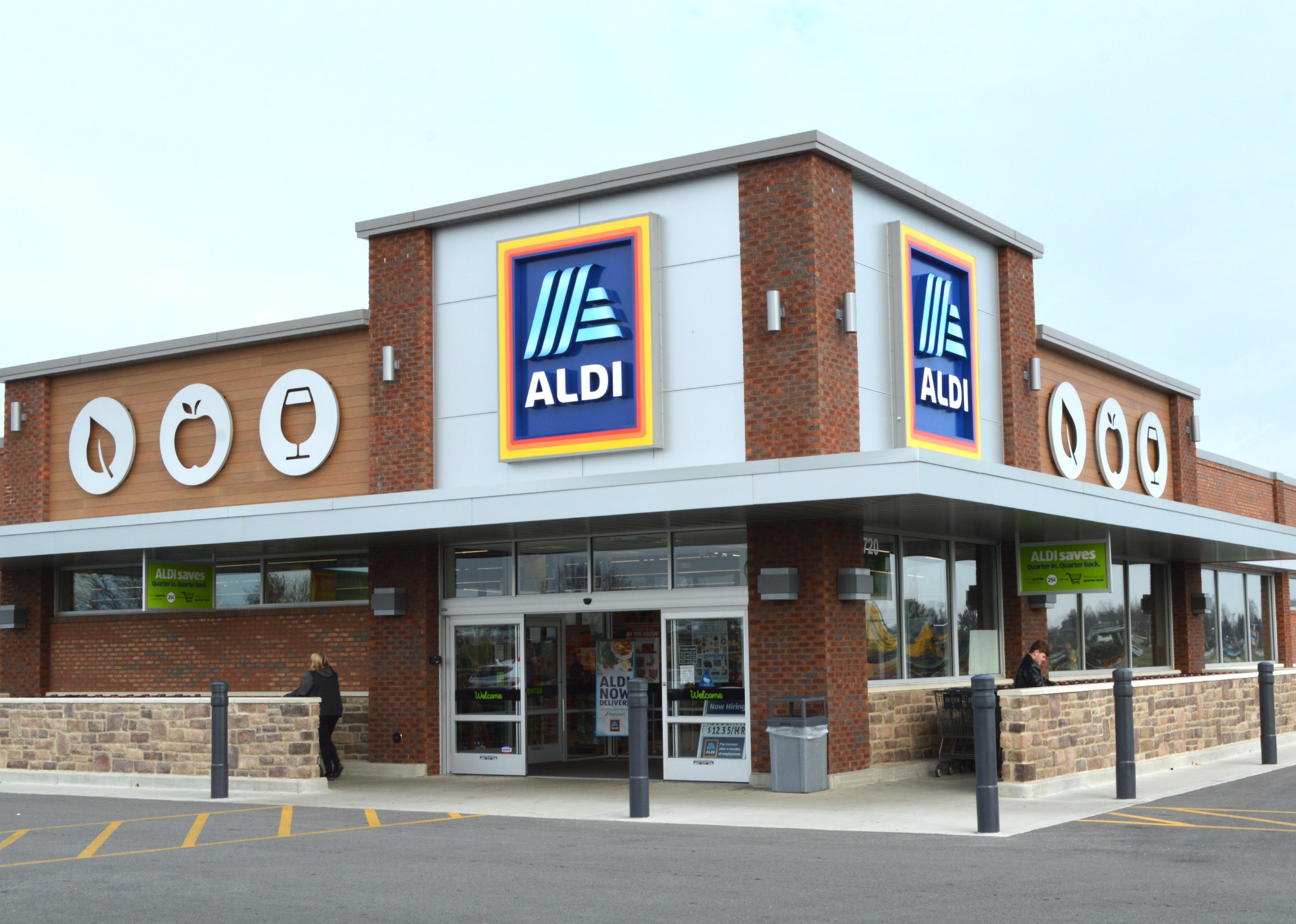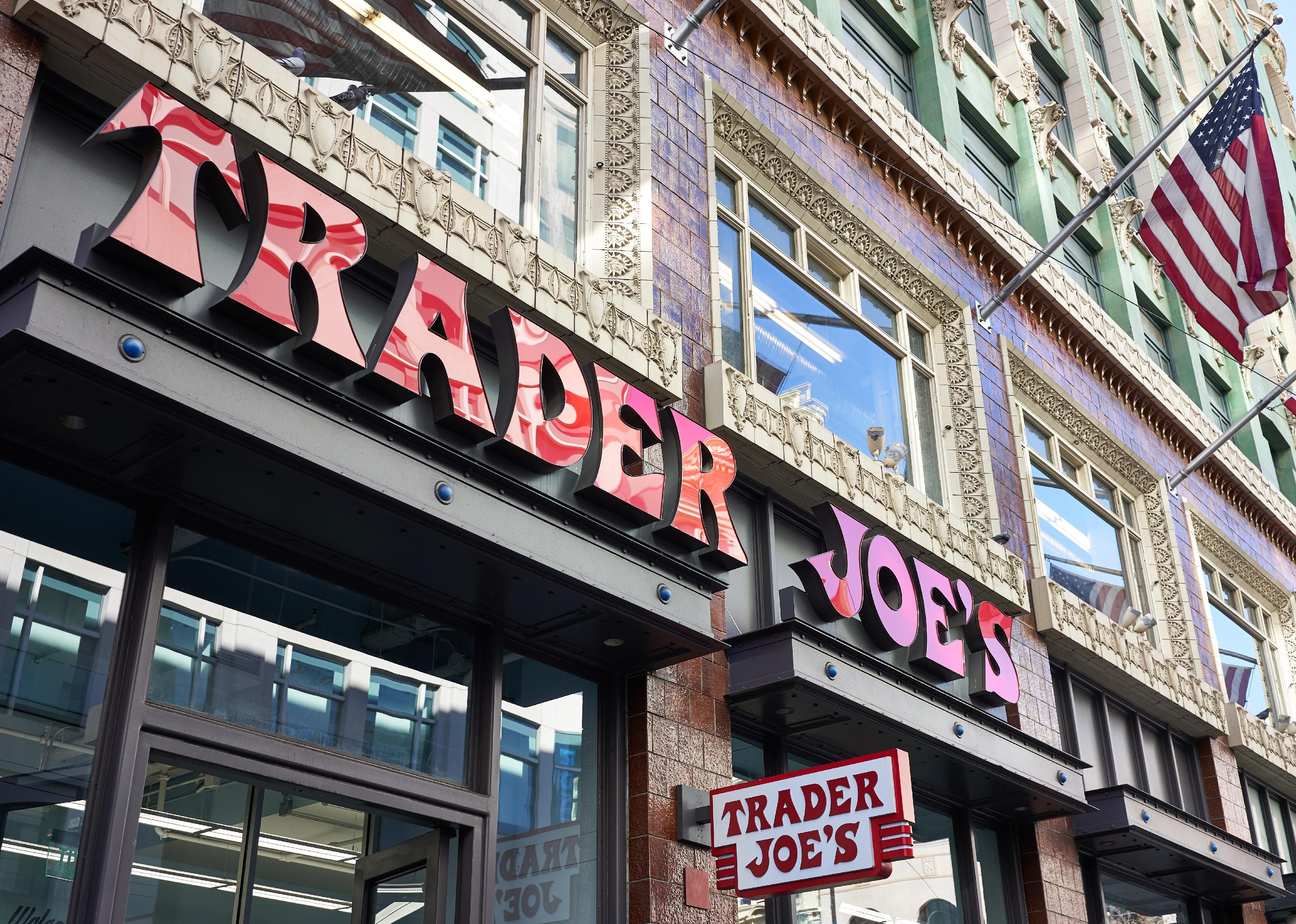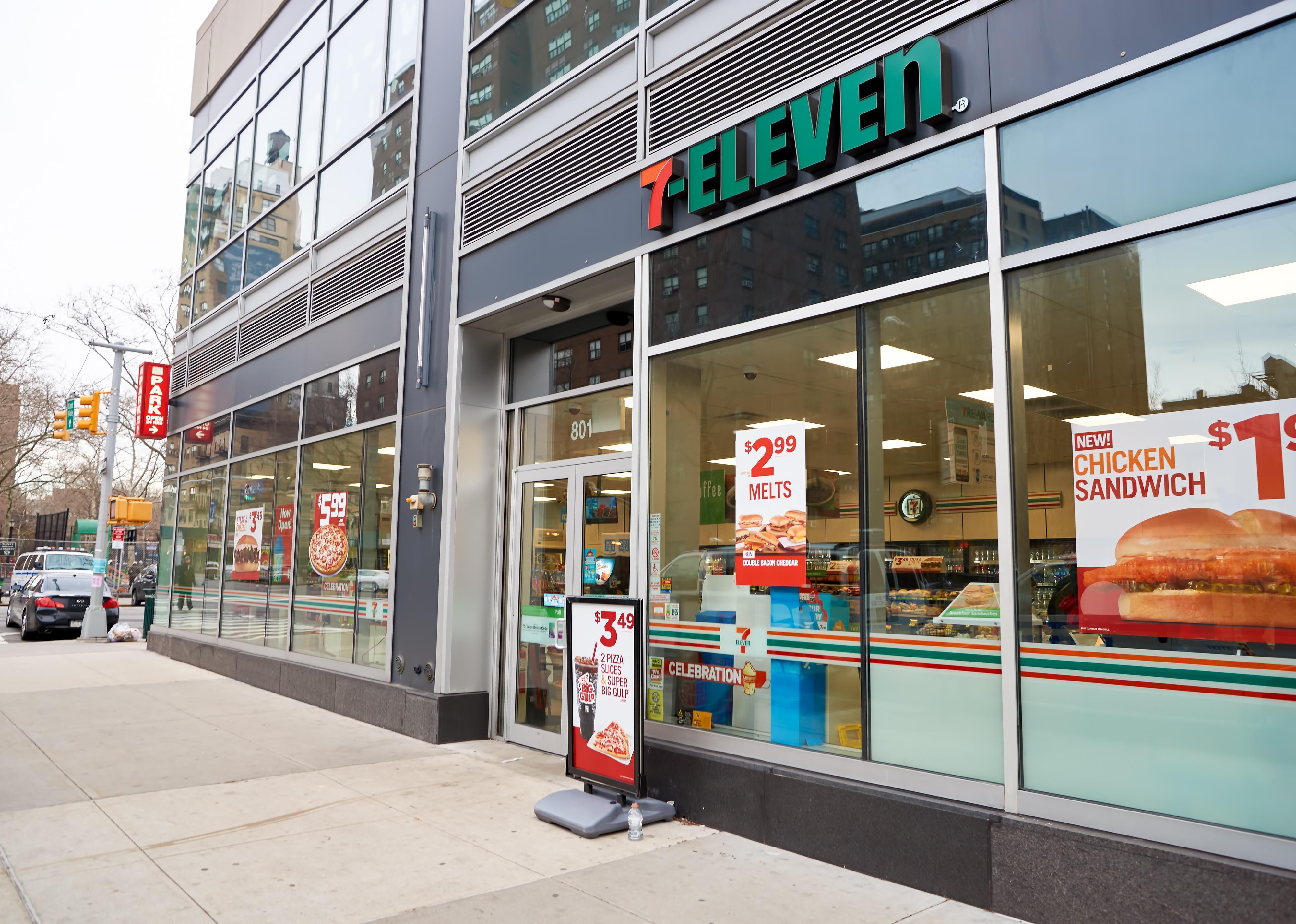Most popular grocery stores in America
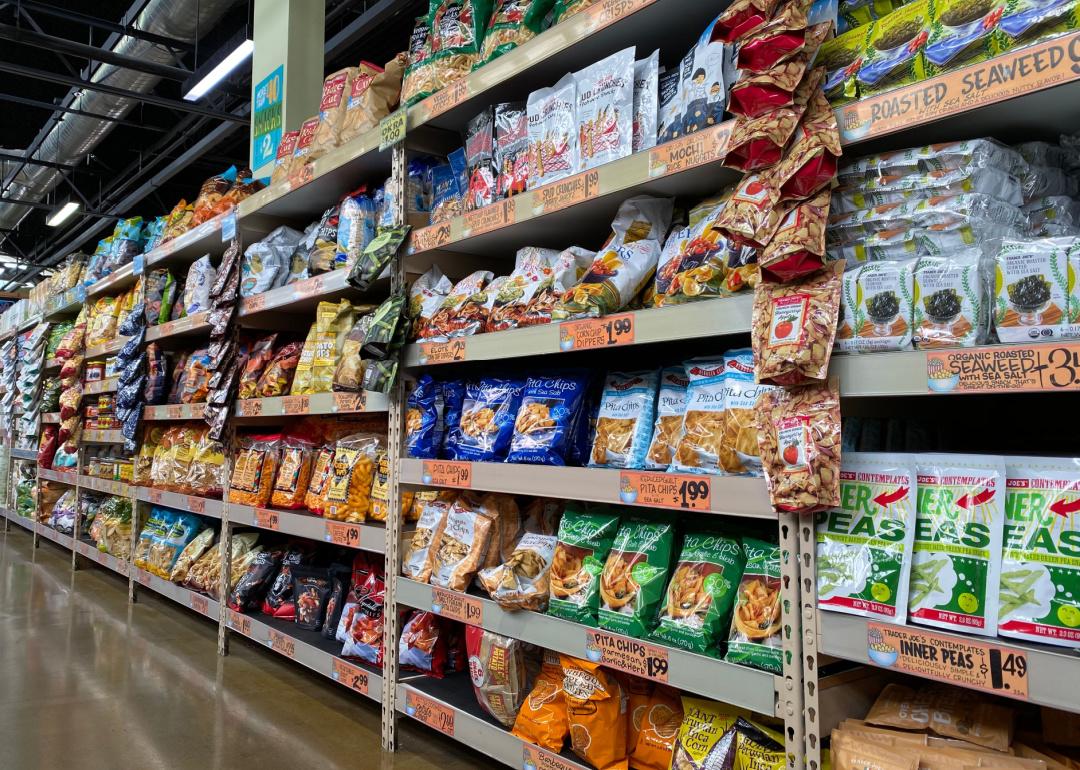
Larry Zhou // Shutterstock
Most popular grocery stores in America
Fully stocked shelves at a Trader Joe’s in San Francisco, California.
Expect discount groceries to be more popular than ever since the cost of food has soared. Shoppers have seen the largest price hikes since the 1980s in the grocery aisles.
From 2021 to 2022, prices rose about 11%, compared with 2% in previous years. Inflation was part of the story, but there were other reasons too. Outbreaks of avian flu caused the price of eggs to jump. The COVID-19 pandemic brought disruptions to the global food supply chain, among them slowdowns at meat processing plants and in food transport as workers and drivers got sick. The war in Ukraine affected supplies of wheat, corn, sunflower oil, and fertilizer—shortages exacerbated by a drought in the United States. Corporate opportunism played a role as well.
Prices are expected to grow more slowly in 2023 than they did in 2022, but increases are likely nonetheless, according to Steve Morris, an agricultural expert with the U.S. Government Accountability Office. Food costs typically rise about 2% but are predicted to be higher this year.
Grocery shopping is serious business in America. Even before the recent increases, the average household spent more than 10% of its income on food, according to the Department of Agriculture.
Stacker ranked the most popular grocery stores in America, using consumer ratings from the first quarter of 2023, sourced from YouGov polls. The popularity rating represents the share of Americans who say they like the store, while the fame rating is the share of Americans who have at least heard of the store. YouGov ratings are based on national polling and weighted to equitably represent different demographics, such as age and gender.
Many stores are preferred by customers for their no-frills approach, like Cub supermarkets and Food 4 Less, where shoppers bag their own groceries. Others, like Wild Oats, nurture loyalty with a rebate policy for members, based on how much they purchase, or like Casey’s convenience stores that met customer needs during the COVID-19 outbreak by expanding delivery services at more than half its stores.
Some grocery stores are iconic, like New York’s Fairway shops with their extensive olive and cheese selections or the two-step dance parties at Texas’ Central Markets. Others celebrate their humble beginnings, like the Hannaford and Jewel-Osco markets that began with goods sold from horse-drawn carts.
Some favorite brands have not survived, like A&P stores, while others have changed the way people shop. Piggly Wiggly pioneered the first self-service grocery stores, and Trader Joe’s dresses its shops with eccentric decor. With the arrival of the coronavirus pandemic, remote ordering and contactless deliveries became popular.
![]()
David Tonelson // Shutterstock
#40. BevMo!
BevMo! shopping carts.
– Popularity rating: 26%
– Fame rating: 42% (Rank: #40)
BevMo! is a West Coast beverage retailer with more than 160 stores in California, Washington, and Arizona, and an extensive online business. Founded in 1994 in the San Francisco Bay Area, it was originally Beverages and More! The stores are big, with wide aisles and enormous selections.
Tada Images // Shutterstock
#39. WinCo Foods
WinCo Foods checkout station.
– Popularity rating: 26%
– Fame rating: 45% (Rank: #34)
Across the western U.S., WinCo Foods has more than 125 stores, the newest in Billings and Helena, Montana. The chain started in 1967 in Boise, Idaho, with a warehouse-style grocery called Waremart. In its supermarkets in the 1970s, customers used red grease pencils to write the prices on their items. Company employees bought a controlling share of the business in 1985. The name is short for Winning Company.
John Greim // Getty Images
#38. Harris Teeter
Harris Teeter storefront.
– Popularity rating: 27%
– Fame rating: 47% (Rank: #32)
Grocers W.T. Harris and Willis Teeter founded Harris Teeter in 1960 in North Carolina. Today, it is a subsidiary of The Kroger Co., with more than 230 stores and 14 fuel centers in the southeastern U.S. The stores were criticized for refusing to require face masks against COVID-19, prompting some employees to quit. Online petitions were circulated asking stores to comply with the North Carolina governor’s order to wear masks.
Portland Press Herald // Getty Images
#37. Hannaford
Hannaford checkout aisles.
– Popularity rating: 27%
– Fame rating: 45% (Rank: #34)
Hannaford supermarkets started in 1883 in Portland, Maine, where the Hannaford brothers sold fresh produce from a horse-drawn cart. The company expanded to more than 180 stores in New England, New York, and the Southeast. It was acquired in 2000 by Belgium’s Delhaize Group, now called Ahold Delhaize.
Lizardflms // Shutterstock
#36. Central Market
Grocery items on a checkout conveyor belt.
– Popularity rating: 27%
– Fame rating: 42% (Rank: #40)
First opening in Austin in 1994, Central Market stores are known for their vast selections and in-house dining. They also have live music and Texas two-step dance parties.
Kit Leong // Shutterstock
#35. 99 Ranch Market
99 Ranch Market storefront.
– Popularity rating: 28%
– Fame rating: 41% (Rank: #42)
In 1984, 99 Ranch Market opened its first store in the Little Saigon neighborhood of Westminster, California, an Orange County town. It is family owned and now the largest Asian supermarket chain in the country, with more than 50 stores, mostly in California, Washington, Oregon, Nevada, and Texas, but also in New Jersey.
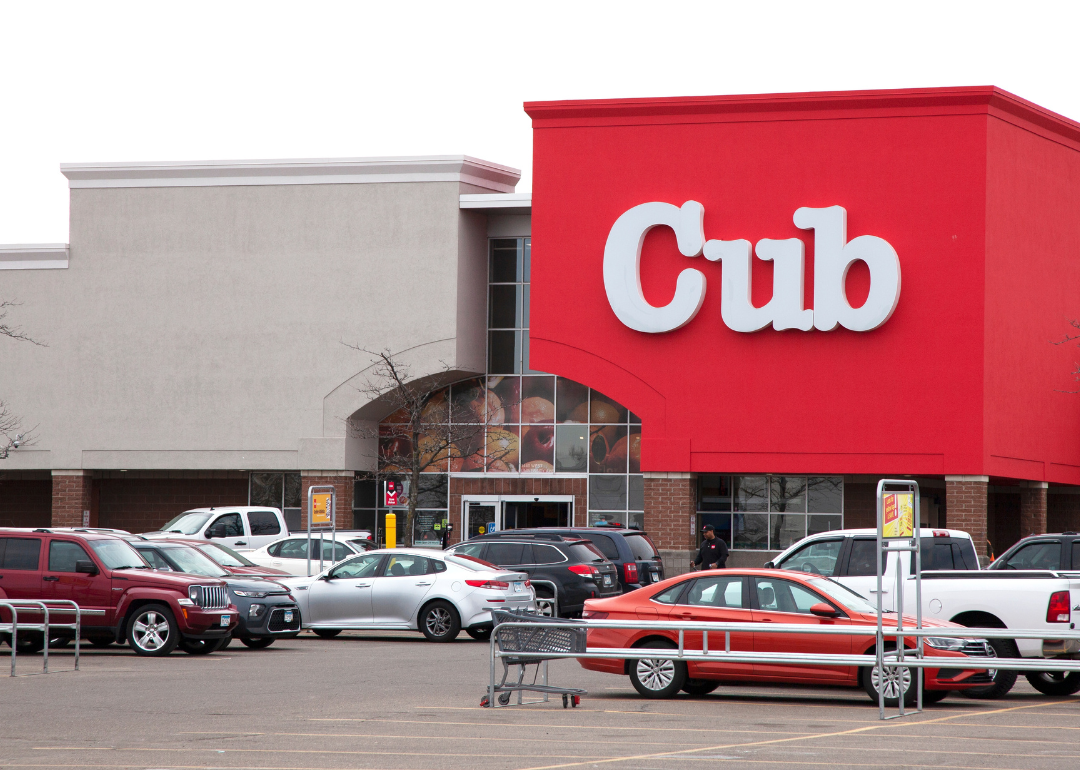
Steve Skjold // Shutterstock
#34. Cub (supermarket)
A Cub grocery store in St. Paul, Minnesota.
– Popularity rating: 28%
– Fame rating: 46% (Rank: #33)
The name of Cub, a Midwestern supermarket chain, originally stood for Consumers United for Buying. It is known for no-frills shopping, where customers often bag their own groceries. It changed its name from Cub Foods to Cub in 2018.
Sorbis // Shutterstock
#33. Jewel-Osco
Produce layout at Jewel-Osco.
– Popularity rating: 28%
– Fame rating: 49% (Rank: #29)
The Midwest’s Jewel-Osco stores originated in 1899, with two brothers-in-law selling coffee and tea door to door from a horse-drawn wagon. The Jewel Tea Co. expanded to acquire grocery stores in the Chicago area and started a mail-order catalog business as well. It bought Osco Drugs in the 1960s. Now owned by Albertsons, Jewel-Osco has more than 180 stores in Illinois, Iowa, and Indiana.
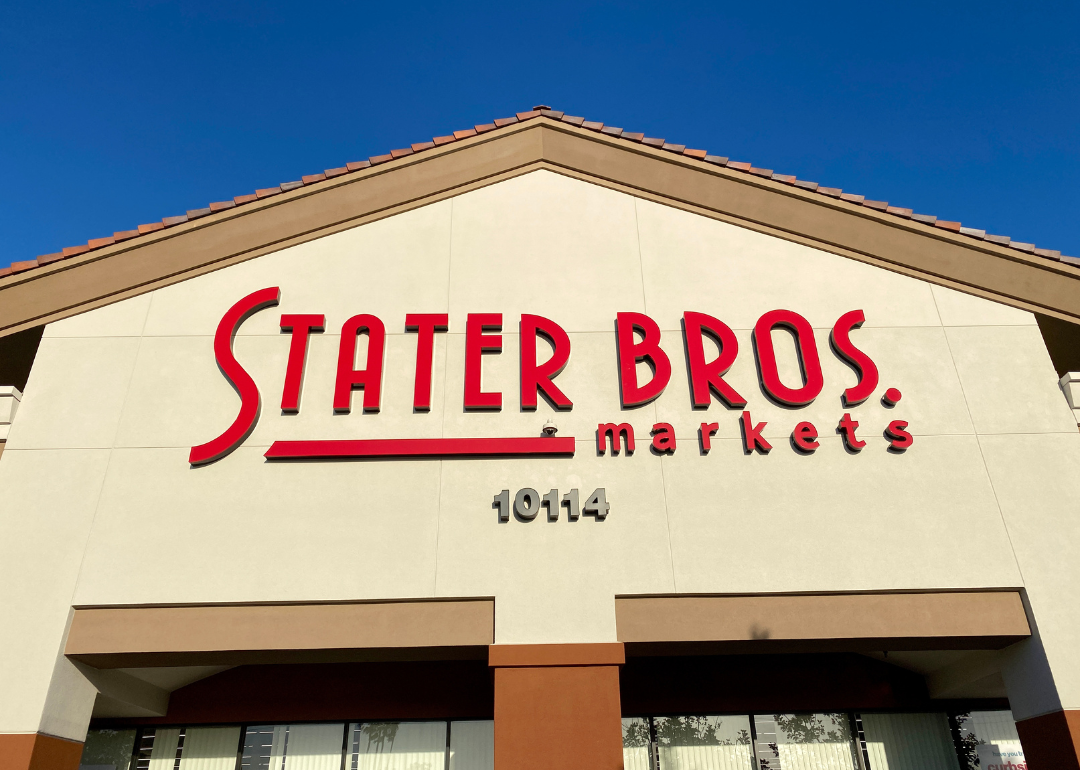
KK Stock // Shutterstock
#32. Stater Bros. Markets
A Stater Bros Market storefront against a blue sky in Huntington Beach, California.
– Popularity rating: 28%
– Fame rating: 44% (Rank: #37)
Stater Bros. Markets began with a small grocery store in Yucaipa, California, which twin brothers Cleo and Leo bought during the Great Depression. Half of the $600 down payment came from the owner of a rival grocery store across the street. By 1939, the brothers opened an additional four stores in San Bernardino County. During World War II, their parents operated the markets while the brothers served as pilots in the Army Air Corps. They sold their interests in the company in 1968. Today, there are 170 supermarkets in seven California counties, with about 18,000 employees and more than $4 billion in annual sales.
MediaNews Group/Boulder Daily Camera // Getty Images
#31. Wild Oats
Wild Oats storefront.
– Popularity rating: 29%
– Fame rating: 51% (Rank: #28)
Wild Oats is a member-owned cooperative grocery based in Williamstown, Massachusetts. It started as a buying club in 1975 and opened its store in 1982 with 100 members. It has a policy of returning its surplus revenue to member-owners, who get annual rebates based on how much they spend throughout the year.

Helen89 // Shutterstock
#30. Grocery Outlet
A Grocery Outlet storefront in Philadelphia.
– Popularity rating: 29%
– Fame rating: 45% (Rank: #34)
Founder Jim Read sold surplus military food at discount prices in the first store he opened in San Francisco in 1946. Today, the chain—based in Emeryville, California—has more than 400 stores across the country and draws over 1.5 million shoppers each week. Since 1973, some stores have been run by locally based independent operators. The company went public in 2019 and celebrated its 400th store in 2021, which also was its 75th anniversary.
Ken Wolter // Shutterstock
#29. Casey’s
Casey’s storefront.
– Popularity rating: 29%
– Fame rating: 49% (Rank: #29)
Casey’s has more than 2,000 convenience stores in the Midwest. Founder Donald Lamberti opened his first convenience store in Boone, Iowa, in 1968, naming it after the initials of a friend, Kurvin C. Fish. Lamberti opted to move into small communities, and to this day, more than half the stores are located in places with fewer than 5,000 residents. With the outbreak of the coronavirus, Casey’s expanded delivery services at more than half of its stores.
Country Gate Productions // Shutterstock
#28. Giant
Green Giant store truck.
– Popularity rating: 30%
– Fame rating: 49% (Rank: #29)
Giant stores are located in Delaware, Virginia, Washington D.C., and Maryland; the company is headquartered in Landover, Maryland. The first store opened in Washington in 1936. The company’s founders were Nehemiah Myer Cohen, an immigrant from Palestine, and his partners Samuel and Jacob Lehrman. In the 1970s, the company implemented computer-aided checkout and price scanners in its stores.
WoodysPhotos // Shutterstock
#27. Stop & Shop
Stop & Shop storefront.
– Popularity rating: 31%
– Fame rating: 52% (Rank: #27)
Located in New England and the Northeast, Stop & Shop traces its roots to the Rabinovitz family, who opened their Economy Grocery Store in Somerville, Massachusetts, in 1914. The company’s early stores were pioneers in self-service, and its name became Stop & Shop in 1947. Today, its parent company is Ahold Delhaize, based in the Netherlands.
B Brown // Shutterstock
#26. A&P
A refrigerated produce aisle.
– Popularity rating: 32%
– Fame rating: 64% (Rank: #19)
Founded in New York City in 1859, the Great Atlantic & Pacific Tea Company opened its first store in 1912. Decades later, with almost 16,000 stores, it was the world’s largest retail grocery company. Its popular brands included Jane Parker baked goods and Eight O’Clock Coffee. But industry analysts said the grocery giant was slow to respond to a changing market and changing tastes and began to look outdated as competitors outpaced it. A&P filed for bankruptcy a second and final time in 2015.
Moab Republic // Shutterstock
#25. H-E-B
Texas tote bag inside shopping cart.
– Popularity rating: 32%
– Fame rating: 56% (Rank: #24)
Florence Butt opened the first C.C. Butt store in 1905 in Kerrville, Texas, and her son Howard E. Butt opened a second store in 1926. The first store under the name H-E-B opened in San Antonio in 1942. In the 1950s, the company expanded into supermarkets, consolidating butchers, fish markets, bakeries, and pharmacies into its stores, and in 1997, it expanded into northern Mexico, with its first store in Monterrey.
David McNew // Getty Images
#24. Fresh & Easy
Fresh & Easy storefront logo.
– Popularity rating: 33%
– Fame rating: 59% (Rank: #21)
Fresh & Easy stores were an effort by British retail giant Tesco to break into the U.S. market, launching in 2007 in several Western states. Fresh & Easy went into bankruptcy protection in 2013, when dozens of its stores were sold to Yucaipa Companies. Fresh & Easy went into bankruptcy protection again in 2015, and the stores closed.
John Arehart // Shutterstock
#23. ShopRite
Produce section of grocery store.
– Popularity rating: 33%
– Fame rating: 58% (Rank: #23)
ShopRite is a retailer-owned cooperative of stores in New Jersey, New York, Pennsylvania, Connecticut, Delaware, and Maryland. The cooperative, Wakefern Food Corp., dates back to 1946, when a group of grocers organized to buy products collectively in large quantities to get better prices. Today, Wakefern, consisting of more than 40 grocers that run about 190 supermarkets in the region, is the nation’s largest retailer-owned cooperative.
Eric Glenn // Shutterstock
#22. Giant Eagle
Giant Eagle storefront.
– Popularity rating: 33%
– Fame rating: 54% (Rank: #25)
Five families started Giant Eagle in the 1930s and built a supermarket chain, which also includes OK Grocery food stores located in and around Pittsburgh. It opened Iggle Video rental locations in its stores in the 1980s and later expanded into full-service dining at its newest Market District stores.
Thaiview // Shutterstock
#21. Shop ‘n Save
Fruit and vegetable section of grocery store.
– Popularity rating: 34%
– Fame rating: 59% (Rank: #21)
More than 90 Shop ‘n Save stores are independently owned and operated in Pennsylvania, Ohio, Maryland, West Virginia, and New York. Its Midwestern stores were liquidated by parent company SuperValu in 2018 after it could not find buyers.
Juan Llauro // Shutterstock
#20. Food 4 Less
Food 4 Less storefront.
– Popularity rating: 34%
– Fame rating: 54% (Rank: #25)
Food 4 Less is a subsidiary of The Kroger Co. It has 129 warehouse-style supermarkets in California, Illinois, and Indiana. Customers bag their own groceries, which the company says is a way to keep costs down.
ArliftAtoz2205 // Shutterstock
#19. IGA
IGA storefront.
– Popularity rating: 37%
– Fame rating: 65% (Rank: #17)
The Independent Grocers Alliance, or IGA, is an international network of supermarkets first organized in 1926 by family-owned groceries that grouped together to become more competitive in their purchasing and marketing but keep their local identities. It has more than 1,100 stores in nearly all U.S. states and about 5,000 in more than 30 other countries. Benefits to IGA members, typically located in small towns, are volume buying and advertising, and the alliance makes some 2,300 private-label IGA brand products.
Todd A. Merport // Shutterstock
#18. Sprouts Farmers Market
Sprouts Farmers Market storefront.
– Popularity rating: 38%
– Fame rating: 64% (Rank: #19)
The first Sprouts opened in Chandler, Arizona, in 2002, with a focus on fresh and organic products, and the company grew quickly. It went public in 2013 and started opening stores in the Southeast, mid-Atlantic, and Northwest. It now has more than 340 stores in 22 states.
Hunter Bliss Images // Shutterstock
#17. Food Lion
Grocery store aisles.
– Popularity rating: 39%
– Fame rating: 72% (Rank: #13)
Food Lion is located in 10 mid-Atlantic and southeastern states. It began in Salisbury, North Carolina, in 1957, and has grown to more than 1,000 grocery stores.
Food Lion was at the center of a landmark legal case in the 1990s, when two ABC News producers submitted false job applications and were hired at its stores in North and South Carolina. They secretly filmed practices in the meat departments, and ABC’s “Primetime Live” broadcast a segment claiming Food Lion’s meat handling was filthy and unsafe.
Food Lion sued ABC successfully on grounds that the filming was illegal, but a federal appeals court determined Food Lion had not been harmed and dismissed most of the damages.
JHVEPhoto // Shutterstock
#16. Wegmans
Wegmans storefront.
– Popularity rating: 39%
– Fame rating: 65% (Rank: #17)
Privately owned, Wegmans has more than 100 supermarkets in New York, Pennsylvania, New Jersey, and other New England and mid-Atlantic states. The stores are known for being huge and laid out like outdoor markets. The Wegman family started the company in 1916 in upstate New York with the Rochester Fruit & Vegetable Company.
Jonathan Weiss // Shutterstock
#15. Meijer
Meijer storefront.
– Popularity rating: 39%
– Fame rating: 68% (Rank: #15)
Meijer is family owned and has more than 200 stores in Michigan, Wisconsin, Ohio, Illinois, Indiana, and Kentucky. In the 1960s, it developed the concept of supercenter stores carrying not only groceries but auto supplies, clothing, home goods, and banking services.
Andriy Blokhin // Shutterstock
#14. Save-A-Lot
Save-A-Lot storefront.
– Popularity rating: 40%
– Fame rating: 72% (Rank: #13)
Save-A-Lot is a franchise-style grocery chain with more than 1,300 stores. Its first store opened in Cahokia, Illinois, in 1977, using what is known as a “hard-discount model.” A hard-discount store typically sells a small array of products in a small venue, with low staffing and often in low-income areas. The product choices are limited to the most commonly purchased goods and the store’s own brands. The stores target low- and fixed-income consumers who need ready access to grocery shopping in less affluent neighborhoods.
Kondor83 // Shutterstock
#13. Fresh Market
Fresh produce layout at grocery store.
– Popularity rating: 41%
– Fame rating: 66% (Rank: #16)
Following a trip to Europe, Fresh Market founders Ray and Beverly Berry sought to replicate the feel of an open food market with specialized products and service, a butcher, and flower stands, rather than the warehouse-style supermarkets common in the U.S. They opened their first store in Greensboro, North Carolina, in 1982. Today, Fresh Market has some 159 stores in 22 states. The company went private in 2016, with its purchase by Apollo Global Management.
VDB Photos // Shutterstock
#12. Amazon Fresh
Amazon Fresh storefront.
– Popularity rating: 43%
– Fame rating: 83% (Rank: #9)
Amazon Fresh is the grocery-delivery service started in 2007 by the online giant. Customers order online, and deliveries are scheduled in two-hour windows. Contact-free delivery of packages left unattended at the customer’s door was developed during the COVID-19 pandemic.
Felix Mizioznikov // Shutterstock
#11. Publix
Publix storefront.
– Popularity rating: 44%
– Fame rating: 80% (Rank: #11)
Publix has more than 1,200 stores, mostly in Florida, Georgia, and other southeastern states. Founder George Jenkins started as a stock clerk and then a manager at Piggly Wiggly before opening his own store in Winter Haven, Florida, in 1930.
Lisa Aiken // Shutterstock
#10. Albertsons
Refrigerated foods aisle.
– Popularity rating: 46%
– Fame rating: 75% (Rank: #12)
According to the company, Joe Albertson scraped together his savings and a loan from his wife’s Aunt Bertie to open the first Albertsons store in Boise, Idaho, in 1939. The grocery giant, which went public on the New York Stock Exchange in June 2020, operates in 34 states with the store brands of Albertsons, Acme, Safeway, Jewel-Osco, Shaw’s, Carrs, and more.
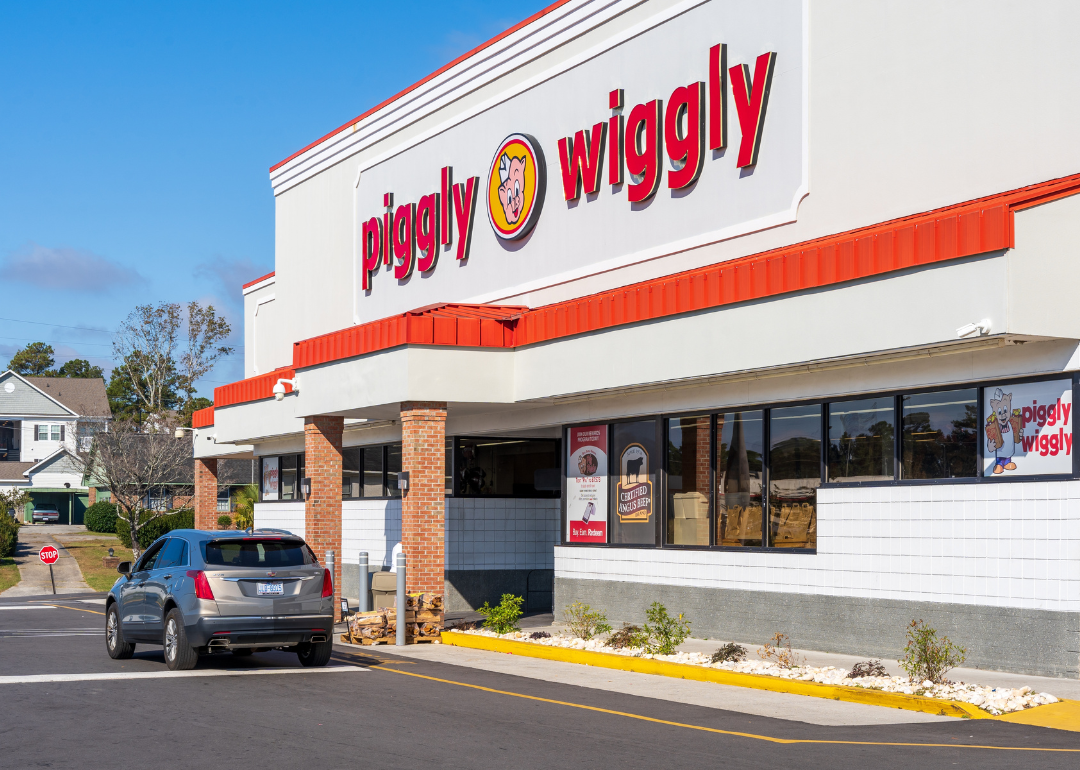
Red Lemon // Shutterstock
#9. Piggly Wiggly
A Piggly Wiggly store in Leland, North Carolina.
– Popularity rating: 46%
– Fame rating: 83% (Rank: #9)
Piggly Wiggly started out in 1916 in Memphis, Tennessee, where it was the nation’s first self-service grocery store, cutting costs by replacing the traditional model of clerks who would fetch goods from shelves for customers. The format was franchised to grocery store operators, largely in the Southeast; today, more than 530 Piggly Wigglys are located in 17 states. The company says the origin of its unusual name is unknown. According to one story, founder Clarence Saunders said he chose the name for the very reason that people would ask about it.
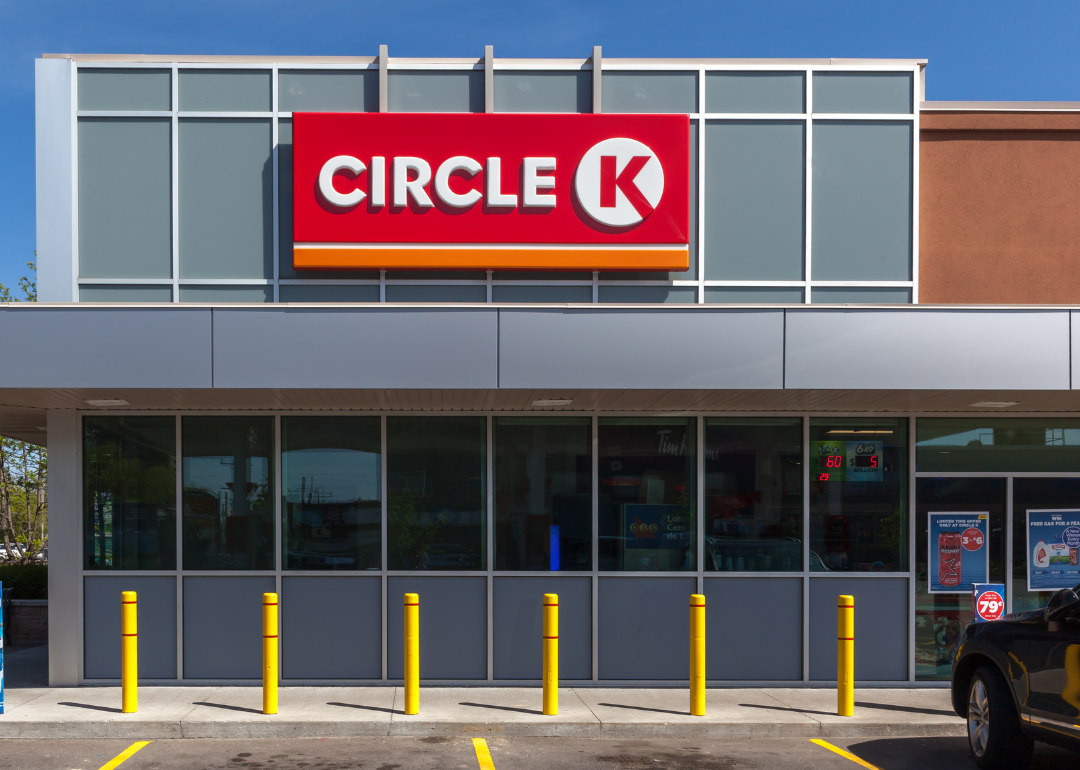
JHVEPhoto // Shutterstock
#8. Circle K
The facade of a Circle K in Toronto, Ontario.
– Popularity rating: 48%
– Fame rating: 86% (Rank: #7)
The convenience store chain has its roots in El Paso, Texas, where Fred Hervey bought three Kay’s Food Stores in 1951 and then expanded into Arizona and New Mexico. There were 1,000 stores across the United States by 1975, with others in Japan under a licensing agreement beginning in 1979. Sales hit $1 billion by 1984. The chain was bought by the Canadian Alimentation Couche-Tard in 2003 and is now in more than 20 countries.
Michael Vi // Shutterstock
#7. Safeway
Safeway storefront.
– Popularity rating: 49%
– Fame rating: 87% (Rank: #6)
The grocery giant started in 1915 in American Falls, Idaho, and by 1928, Safeway was listed on the New York Stock Exchange. In 2014, Albertsons bought Safeway in a $9.4 billion deal. There are now about 900 Safeway locations in 17 states and Washington D.C.
Ken Wolter // Shutterstock
#6. Winn-Dixie
Winn-Dixie storefront.
– Popularity rating: 50%
– Fame rating: 86% (Rank: #7)
The original Winn-Dixie founders started with a grocery store in 1913 in Idaho before moving to the southeast, where they opened a store in 1925 in Miami. The company bought up dozens of stores in the region and became Winn-Dixie in 1955. It ran into financial difficulties and filed for bankruptcy protection in 2005. Today, about 500 Winn-Dixie stores can be found throughout the Southeast—in Mississippi, Alabama, Georgia, Louisiana, and Florida.
Alastair Wallace // Shutterstock
#5. Whole Foods Market
Whole Foods Market produce section.
– Popularity rating: 56%
– Fame rating: 96% (Rank: #2)
The first Whole Foods Market opened in Austin, Texas, in 1980. Now, 40 years later, it has more than 500 stores specializing in natural and organic products. In 2017, Amazon bought Whole Foods in a $13.7 billion cash deal. Under Amazon’s ownership, some prices dropped, but research in 2019 found Whole Foods had the highest grocery chain prices in eight U.S. metropolitan areas.
Kevin Chen Images // Shutterstock
#4. Kroger
Kroger storefront.
– Popularity rating: 60%
– Fame rating: 94% (Rank: #4)
With annual sales of more than $121 billion and almost 2,800 stores, Kroger is a retail grocery giant. The first Kroger store, which opened in 1883 in Cincinnati, pioneered baking its own bread and making some of its own products. In the 1970s, the grocery retailer pioneered using electronic scanners.
Eric Glenn // Shutterstock
#3. Aldi
Aldi storefront.
– Popularity rating: 62%
– Fame rating: 90% (Rank: #5)
More than 1,900 Aldi stores are located in 36 U.S. states. Nearly all—more than 90%—of the products they sell are Aldi brands, a system that is designed to lower prices with its lower procurement costs. Aldi charges a 25-cent deposit for use of its grocery carts so customers will return them to the cart corral.
Tada Images // Shutterstock
#2. Trader Joe’s
Trader Joe’s storefront.
– Popularity rating: 63%
– Fame rating: 96% (Rank: #2)
Trader Joe’s is known for its low-cost, private-label products, which started when it introduced its own granola in 1972. In 2002, it added Charles Shaw wines, which quickly earned the nickname “Two Buck Chuck.” The 500-plus store chain has a reputation for affordable prices and cheerful service.
Sorbis // Shutterstock
#1. 7-Eleven
7-Eleven storefront.
– Popularity rating: 63%
– Fame rating: 97% (Rank: #1)
The first convenience store, 7-Eleven, started in 1927, with the sale of food from the dock of an icehouse in Dallas. By 1946, the store locations were named 7-Eleven for being open from 7 a.m. to 11 p.m. 7-Elevens were the first stores to add fuel pumps, self-service soda vending machines, and ATMs.
Today, there are some 60,000 7-Elevens worldwide. Due to the COVID-19 pandemic, 2020 was the first time the store failed to celebrate July 11 (i.e., 7/11) by offering free Slurpees to customers, a tradition it started in 2002 and resumed in 2021. But in 2020, the company instead said it donated a million meals to a charity to feed the hungry.
Data reporting by Paxtyn Merten. Story editing by Jeff Inglis. Copy editing by Andrew Mangan. Photo selection by Abigail Renaud.
